g High st stakes










Philip HOPKINS
RUNNINGafarmisbecoming increasingly complex, especially if you specialise in both beef and dairy.
The pressureisontoexpand, and economic and climate issues abound. Just ask East Gippsland farmer Chris Nixon. Chris and his wife Helen have combined their familyoperationstocreate abig farm, from properties at Orbost, Cann River and Wulgulmerang.
Three decades ago, he milked 175 dairy cows and had 240-odd beef.
"Today, Imilk 500 cows and run about 2000 beef between the two farms, so obviously Iknow alot about debt and interest rates," he quipped.
"I'm akeen student of interest rates! When firstfarming in the late 1980s, interest rates wereat18per cent -the 'recession we had to have'. What people don't understand about interest rates and inflation, is that inflation historically is notbeatenuntil
interest rates arehigher than the inflation rate.Thereisnosuch thing about asoft landing, especiallywhen thereare governments 'racking up' huge debts.



"Weare strugglingwithsome of the highest energyprices in the world. People are hung up about climate hysteria; we will save the world with one per cent of global emissions.Wehave sixcoal-fired power stations in Australia, with two to close in the not too distant future. China this year is building 106 gigawatts of coal stations -only China, not even India. We only have 6GW of coal-fired power.Wethink by closing these stations we will save the world. It's ludicrous beyond belief that people are falling for this stuff. Youcan’t have sensible debate -you'rea denier.Millennials are falling for this."
Being abig enterprise, the Nixons have developed aloose management structure withmanagersatthe propertiesand a couple of other employees.






“Wetry to empower our guys in the



various places to make decisions. It works quitewell; theyget to enjoyhaving good management input to runfarms, they get a sense of ownership, and it’s good for Helen and I,” he told Gippsland Farmer “I can leave them to it and they will make gooddecisions.”
Over the long haul, Chris has found dairy amuch better industry to be in than beef.

“Even though we areabigger beef operation, the last few years have been agolden patch for beef and that was 35 years in the making. Iprobably won’t see it again in my lifetime,” he said.
“Wedofind that dairy is traditionally a morestableindustry if you watch your costs; beef is moreupand down. Normally when beef is up, dairy is down. The start of the year when both wereupwerevery good -Ihaven't seen that beforeand probably never will again.”






Chris said beef was driven by the export market.Abig depressorfor exportshad been that America and SouthAmerica had





been destocking due to drought conditions.
“TheAmericanherdisabout twice the size of the Australian; basically, they have depressed manufacturing beef price,” he said.



With America going through adestocking phase, beef sold mustwashthrough the market place. Cool storesthatwerefull, have emptied since Christmas, “so Iexpect the fat price in Australia, the finished price in Australia, will improve.”

‘Plant-based meats’are anotherchallenge for the beef farmer

“Any disruptor is never any good. Part of the issue with plant-based meats is, they pretend to be something they arenot. Thereisnoway they will get the amount of micro-nutrients and nutrition out of a plant-based thing grown in alab with a test tube of stainless steel, rather than naturally animal-eating pastures in a natural environment,” he said.
Continued on page 3
Shearing became a sport at the East Gippsland Field Days.
THOUSANDS of peoplefromacross the state descended onthe Bairnsdale Aerodrome last month for the annual agriculturalevent East Gippsland Field Days.
Established in 1986,the first East Gippsland Field Days werehosted on Trevor and Judy Richardson's property two kilometres west of Lindenow beforeanincrease in exhibitors warrantedthe agricultural event'srelocationtothe property of Jim and David Johnston at Walpa in 1989.
By 1992 the event attracted 130 exhibitors calling for amorepermanent site,with Lindenow Lions Club working with the East Gippsland Shiretosecurea permanent residency at the Bairnsdale Aerodrome.
East Gippsland Field Days have become one of the most iconic events within the East Gippsland Shire, hosting morethan 300 exhibitor sites and attracting crowds of up to 10,000 from across Gippsland, Victoria and interstate.



The 2023 EastGippslandField Days, Friday, April 21 and Saturday, April 22, did not disappoint; quite the contrary, the cosmic agricultural event featured an extensive list of exhibitors, from food vans and drink stands to farming machinery and animal products to home wears and clothing.
With rows of colossal-sized farming machinery, numerous livestock careexhibitorsand anything else one mayneedon afarm, from irrigation systems to solar power options, the 2023 East Gippsland Field Days were enough to make even the grumpiest of farmers crack asmile.
Among the many livestock stalls at this year's event was Leebrooke Livestock.
Jessica and Matthew Lee took on the East Gippsland cattle property, which had been in his family for six generations, five years ago with avision to build aflock of exceptional quality sheep to run alongside theirAngus cattle.
Having been bornand raised on Hillcreston Superfine Merino Stud near Bigga on the SouthernTablelands of New South Wales, Jess had the sheep experience to do it, but the couple quicklyrealised Merinos were not suited to their land, deciding to go with Australian Whites.
Jess and Matthew Lee established Leebrooke Australian Whites, today running both astud and commercialoperation, carrying primary Tattykeel and Gamadale genetics and grazing 150 Angus breeders.
The Australian White, also known as the "Aussie White", is arelatively new breed developed by three leading Australian sheep stud operations to suit Australian conditionsand modernAustralianlamb market demands.



The Australian White is amoderately large, upstanding meat sheep breed that stands over alot of ground, is white in colour and is aheavy breed without sacrifice to good mobility, with essential traits including good walkability, strong mothering instinct and ahigh degree of vigour in lambs.



Ahair breed with good shedding ability, eliminating the need for shearing, makes AustralianWhites agreat easy-careoption. While Jess no longer has Merino sheep, therewas no shortage of the fine soft woolled breed at the 2023 East Gippsland Field Days.
Macehill Merino, afamily-run stud based in Stockdale, Victoria, with four generations of wool growinghistory,had aselection of young sale rams on display across the weekend.
Neighbourstothe Bairnsdale Aerodrome, Gippsland AgriculturalGroup,werein attendanceatthe 2023 East Gippsland Field Days, with representatives from the not-for-profit group led by farmers for farmers showcasing thegroup's recent projects.
One such project was the growth of a 10-tonne wheat crop in 2022.
Gippsland Agricultural Group sews a rangeof wheatand barley varieties each year at the Gippsland Research Farm to determinewhich performsbest in Gippsland's growing conditions.
The 2022year proved to be an exceptional year for some varieties, with East Gippsland producinga10-tonne per hectarewheat crop managed by agronomist Casey Willis with assistance from Noah Dunn.
Between Working Dog Trials, aTherapy Dogs vs Assistance Dogs presentation, PlayfulPaws'dog presentations, Black Snake Productions Wildlife Show and a petting zoo, East Gippsland Field Days certainly catered to attending animal lovers.
East Gippslandwhip-cracking sensation
Emiliqua East wasapopular event, with the Bairnsdale local's whip-cracking demonstrations drawing in large crowds on both days.
Emi also provided free kids whip-cracking workshops this year,which she described as the best part of the 2023 East Gippsland Field Days in asocial media post.
"Recordgate numbersand perfect weather set the scene for the best fun weekend," Emi said.
"A fantastic,enthusiasticcrowd,and it was wonderful to see so many children with parents and grandparents stop to enjoy my shows on Friday and Saturday.
"Butthe best parts werethe free instructional sessions," she said.






"What ahuge hit it was with the kids! Manyhad neverheld awhip and were towards the end of their first lesson cracking confidently; even blisters did not deter their enthusiasm!
"At least 50 children ranging from four years of age and upwards werekeen to have atry and to learnthe basics of cracking and handling astock whip or improve on their existingtechniques.Whatfantastic numbers.
"You guys who attended made it truly very special for me, and lenjoyedevery minute. Thanks so much to the event organiser and all the committee of the Lindenow Lions Club; it truly felt like lwas part of the family and so thrilled to be back once more."
East Gippsland Field Days was not just ahaven for farmers, with an abundance of non-farmrelated stalls, activities and events hosted across the two days.
With performances from former XFactor star Andrew Wishard, Misty Henderson and Band, the Evans Petroleum Kids Zone and The GreatDino (a racearound the Dino Dash Arena in an inflatable dinosaur suit), 2023 East Gippsland Field Days attendees werespoilt for entertainment choice.
Hundreds of vendors from across the state showcased products from jams and sweet treats to jerkyand chutney to candles and clothing; the stunning display of items on offer was arguably abank account's worst nightmare.
With arecordnumber of exhibitors and guests, thereis no denying the 2023 East Gippsland Field Dayswereasuccess; thegreat folk from the Lindenow Lions
and Lionesseshave once again outdone themselves.
As Gippsland East Nationals MP TimBull said, the growth and success of the East Gippsland FieldDaysis a testament to the hardwork of the Lindenow Lions and Lionesses.
"Since they began way back in 1986, the East Gippsland Field Days have developed into one of the biggest events in the region," Mr Bull said.
"The funds raised go back into the local community and over the yearshave produced ahuge array of beneficial outcomes."

East Gippsland ShireMayor Councillor

Mark Reeves agrees with Mr Bull that East Gippsland FieldDaysis a testament to the hardwork of the volunteer organising committee, saying the event is ahighlight on the region's events calendar
"Thefield days werea great success overall,withexcellentstallholder and visitor numbers across both days at the Bairnsdale Aerodrome," Cr Reeves said.
"Many patrons took the opportunity to visitEastGippsland ShireCouncil's site to engage with us, ask questions or collect information. Great weather added to the positive atmosphere.
"A real highlightthis year was our Grown CaughtMade treasurehunt trail, where children and their parents and grandparents visitedabout12producers or agribusiness-related stalls. It was great to see so many people participate in what was avery engaging initiative.
"Overall, the field days areacredit to the volunteer organising committee to see this event so well supported by exhibitors and the public alike."



From Page 1
“THAT'S ahardstory to sell, the natural advantages of beef compared with plants.”
Chris said beefissuesweretoo often looked at “in asnapshot”.

“For example, methane emissions in cows as amajor greenhouse gas does not tell the whole story of carbon in cattle; it’s headline grabbing, easy to understand, but does not tell thestoryofthe life cycle around animals in grazing and pastures,” he said. “Methane from animals is anatural part of the carbon cycle, the water cycle, for all of us to exist.Carbon and H2O and methane (CH4), they all work together through the carbon cycle and the water cycle -society ignores this and goes for headlines.”

In fact, animal agricultureishealthy for the environment.
“It’s quite dry hereatthe moment. We do DNA tests on the funguses that grow in our soils; when bacillus fungus in your soil improve, your animals arealot healthier,” Chris said.
“Weget much higher carbon sequestration in the soil and we get ahigher rotationalphase farmsystem. Most farmers do. You geta quite high build-upofcarbon in your soils and with healthier,biological agents like fish, kelp and seaweed -all sorts of weirdand wonderful stuff.
“A healthiersoilgives youa much healthier plant, whichgives youmuch healthieranimals,soa human population that eats those animals will be healthier as aresult, you won’t get that response by growing ‘plant meat’ in alab.”
Chris said they spray the farm twice a year with aseaweed fertiliser
“We stopped using nitrogen fertiliser on dairy; we aregetting amuch morebalanced pasture.It'sabout natural systems working in balancetoget amuchmorefriendly outcome for the animals and plants.”
Finding new and better ways to farmis an ongoing process.
“I've changed how Ifarm-this is probably the fourth majorchange. It’s never-ending, thereisalwaysanew idea thatcouldwork, but somethingshave not worked well,” he said.
His current program he calls “Yakult in soils”, a‘probiotic drink’.
“Weare trying to get the different funguses in the soil moreactive; by doing that we are releasing the phosphates and the different trace elementsinthe soils that plants need for healthy existence,” he said.
The Nixons sell cattleto markets at Bairnsdale and Omeo but mostgoto Greenhams in Moe for processing. They keep dairy and beef separate.
“Thereisnocross-over,with animal health issues around disease.Werun closed herds on both beef and dairy,” he said. Since the drought,the emphasishas been on getting costs out of the dairy operation through the three big drivers -herdfertility, mastitis and feet.
Having tried every beef breed -Angus,
Hereford, Simmental, Charolais -the herd is straightAngus withnocrossbreeding. Dairy is predominantlyFriesian Jersey genetics.

Their milking machineisa50-stand rotary that requires two people in the shed -“one cups on, the other cups off” -with milking taking about two hours twice aday. They now sendmilk to BegainNSW afterthe implosion of Murray-Goulburn.
Chris understands the dairy processors’ problems.
“It’s not their fault, they areinthe business to make money,” he said.
The problem now is, thereisnot enough milk. At deregulation,Australia was producing 12 billion litres of milk, only one billion litres behind New Zealand, but now NZ was 20b litres and Australia eight billion litres.
“In the last 10 years, we have lost 7000 dairy farmers and now have only 3200 dairy farmers across Australia. With the shrinkage of the milk pool, processors can’t keep their factories open, the overheads will kill you, so Idon’t blame the processors, they have other issues,” he said.
Drought hit northernVictoria -“Rochester and Cobram all suffered”.






“The northernirrigation districts were 3.5b litres of milk, now they areflat out doing abillion,” he said.
The reasons included the Murray-Darling Basin plan and how water is traded.
“The removal of so much water for environmental flowshas probably gone too far; industry has to contract to the amount of water they've got,” Chris said.
This crisis, along with high living costs, was symptomatic of poor government
policy, of whichthe closureof Victoria’s native forest industry was abig example.
“Orbost issurrounded by3.5million hectares of bushand theyhave closed down the timber industry because people areworried about apossum or aglider in the tiny logging coups,” he said.
“The voters areinthe city and have no understanding of thesizeofthe forest, thereisbush all the way from Melbourne to Mallacoota. Timber closes, we get timber from overseas to build ahouse, thereare not enough plantations,the papermill closes -paper hastocome from overseas,” he said. “Costs go up.”
Bushfires areapermanent risk to farmers.
“I've been burnt out three timesin the past20years. We got smashed in2003 and lost 450 cows in fire,” he said.
This was followedbyfires in 2014and Cann River in 2019.
“HereatOrbost, the bushfirerisk is real, it’s huge. The management of the bush is probably the worst it has ever been.Before the 1960s, fuel loads in the bush wereput under morecontrol than today.”
Chris said since the 2019 fires, Orbost to Buchan is basically black wattle.
“You can’t walk through, it’s so thick. That is an explosive time bomb waiting to go off,” he said.
“Thereisnofuel reduction burning, we have lost forest contractors from the bush -27inEast Gippsland. Who is going to fight the fires? It’s ahuge issue that people don't understand.”
Chris said the bush confronting the early settlers was nothing likewhat the bush looks like today.
“Therewas Indigenous burning. Monaro
tribes used to come down to the coast and go back to the High Country and burnwhen moving on. Therewerenot huge landscape fires,moreacooler,trickleburn. They burnt moreregularly, so you didn’t get the huge fires of the past 20 years,” he said.
“It's anumbers game. Politics is won by those who turnup.”
Melbournewould soon have six million people, with half bornoverseas or with a parent bornoverseas.
“They do not understand the environment we live in, they have preconceived ideas of how things werefromback home,” he said.
“For the environmental movement, all fireis bad philosophy, they have apoor understanding of how the bush works. The new generation thinks landscape fires are normal. Trying to get debate is difficult.”
Chris is apoliticallyaware person; not surprising, given he is the son of National Party maestro, the former federal minister Peter Nixon, who is still going strong at 95.
“I did stand against my cousin, the independent Craig Ingram. That was my one and only foray into politics. Iwas involved as VFF (Victorian Farmers Federation) livestock president in 2009-11, but withdrew into anonymity,” Chris said.
That has led to frustrations.
“It has got to the point whereI’m involved with National Party to try and help formulate better policies, as junior vice-president of the operational wing of NP in Victoria,” he said.
“It’searly days yet,thereisalot todo. We have this disconnect between city and bush.”
 Philip HOPKINS
Philip HOPKINS
PRIVATE companies arepushing up farm land prices around Longford, driven by the demandfor renewable energy infrastructureand potentialcarbon priceearnings from plantations,accordingtoElders Gippsland's principle licensed agent,Greg Tuckett.
Mr Tuckett told Gippsland Farmer thaton the east side of South Gippsland Highway -inthe Longford, Stradbroke and Gifford area -a lot of non-agricultural players werebuyingfarmland.Specifically, the endeavours of energyproducers, like solar and wind farms, had "turbocharged the value of land specifically in that area".
"SP AusNet is active, securingaroute out of the Stradbroke area for power from solar
farms proposed and wind farms proposed offshoreoff the coast," he said.
Mr Tuckettsaid solar and wind companies weretrying to buy up whole properties.
"They takeoptions,acontact with an option,gives them acouple of years to exercise the option and acquirethe land. They will buy them, but they arenot tying up millions of dollars in the interim; they put adepositdownwith afavourable value per acre, and have it when they need it," he said.
AusNet had an option over abig property in Stradbroke that could become ahub to consolidate all their alternative energy sources -solar and wind -beforetransferring the energy via overhead lines to the Latrobe Valley.
"This is having adistinct effectonland values in that specific region," he said.
Mr Tuckett said other non-agricultural companies were actively seeking traditional farmland. Hancock Victorian Plantations was active in the Stockdale area, driven by the state government's $120 million fund to establish forest plantations to replace native forest.
"On top of that, they have an added incentive on top of the fund -anincentive based around carbontrading. Thereare three elements -governmentgrants, the carbon trading market and the additional product, timberout the other end.They areinagreat space," he said.

"Thereare other playersin the carbon trading business. They aremotivated carbon traderstooffset industry polluters. Theyhave the sameincentive regarding tree plantings, funded by government, like Hancock, that alsohave the carbon element," he said.
"The end result is trees, but Idon't know if the trees they plant arecommercial quality trees of not. Some of these purchasershave


In general, however,MrTuckett said there was alack ofproperty coming on to the market. This was not due to atightening of credit,or nervousness by the banks. "Most is aresult of hesitation by vendors. After reading all the negative views about what the market is doing, they have held properties back offthe market. Thereisa lack of stock," he said.
Because of that,"anyplacesthatdocome up, attract plenty of inquiry". "The madness of 2021-22, thefrenzy purchasing, has abated. In the interim, the value of cattlebeef cattle- has subsided as predicted. They arenot half of what they were making,but in some cases only60pcof what theywere makingattheir peak,"he said.
Other factorswerethe increasing cost of funds frombanks;most importantly,the nervousness of rural lenders. "They have big rural loan books. Some banks with specify abig portion of the rural lending portfolio, probablyfeelalittle overexposed,given the looming El Nino and given the forecast for agricultural commodities, very much subdued from the last two years," he said.
"We are finding that any contract subject to a finance clause, we mostly have to ask for an extension of time over and above that clause; we've got to go back to the vendor, say, the bank needs another extension to analyse further - those things are at play behind the scenes."

In essence, the issue was alack of volume of stock on the market."However,for highly productive tracks of land, those properties arestill selling. Remarkably,they may have even gone up agear.Really good land, highly productive, withmultipleoptions for usage -beef or dairy, or vegetables -has not abated value-wise," he said.
Mr Tuckett saiddry, unirrigated landgrazing country -was selling for aminimum
of $5000 per acre, regardless of scale and level ofstructural improvements.Highly developed irrigated dairy properties were valued at $14,000-$16,000 per acre depending on the adjoining landowner pressure.
"Most small scale dairy farms when sold arebeing converted to beef enterprises in spite of historically high dairy product prices. South Gippslanddairyfarms are currently achieving less than this on aper acrebasis," he said.
Mr Tuckett said demand by weekenders for smalllifestylefarms still existed but had abated. "Thereal made tsunami of lifestyle buyers occurred during COVID. The pressurewas unbelievable.
"Many of the places we sold brought more than the asking price. Some werebought unseen, which Ithink is unhealthy,but Ifindnow thathas slowedtoatrickle," he said.
Mostplaces on afew acres offeredfor sale weremostly in catchment areas on the east side of Melbourne. "Again that market is quietdue to alack of stock, a lack of phone calls."
Mr Tuckett said rising interest rates had not yet had an impact on saleability.
"Money will cost moretoborrow, but the real handbrakeislackofproperties on the market. Thereisstillpressureon genuine highly productive land, thereisstill neighbour pressure; they will buy whatever it costs. We refer to it as the 'neighbour tax'!" he said.
"Thosebigger more productive operators, in spite of headwinds and increased production costs, such as fertiliser -they arestill intent on gaining greater economies of sale, they have not backed offatall."
Median land prices jump, Rabobank reports -Page 29






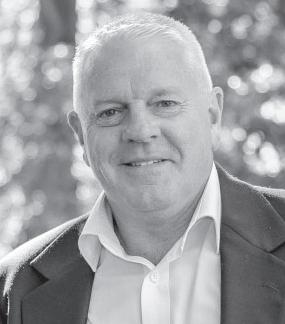

"As this was the final shearing of this trial, sheep wereweighed post-shearing, and a carcase value applied."
While teams of five sheep areentered into the Gippsland SheepBreedersAssociation trial, sponsored by Nutrien Ag Solutions, only four are valued as part of the final result.
Awardwith an average of $86.85. David and LynYatesfromGoon Nure placedsecondwithanaverage carcase value of $85.40, while Ivan and Di Best came thirdwith an average carcase value of $83.42.
GIPPSLAND Sheep Breeders Association's 2020 two-year MerinoWetherwool production trial was officially completed last month, with the final sheering taking place on Friday, April 21,atEastGippsland Field Days.
Sixteen woolgrowers across Gippsland and north-easternVictoria entered teams of five Merino wethers in the two-year wool production trialin2020, with all sheeprun on the Gippsland Agricultural Group site adjacent to the Bairnsdale aerodrome, for the entirety of the trial.
In late April,the opening dayofthe 2023EastGippsland FieldDays, teams descendedupon the Bairnsdale Aerodrome
for the secondand finalsheering of the two-yearMerino wether wool production trial.
Nutrien Ag Solutions Gippsland wool manager andmemberofthe Gippsland SheepBreeders Association, Donald Rash, explainedthat pre-shearing, midside samples aretested for fibrediameter (micron), length, strength, and yield, with sheep weighed and valued to determine the most productive sheep/teams.
"The trial is acomparison of wool values for each sheep," Mr Rash said.

"Fleeces arevalued, the piecesare valued, the bellies arevalued for each sheep, and you get atotal [score] for each sheep in each team, and the higher the value, that range of sheep wins.




"Each grower puts in ateam of five sheep, they select their cull, which isn't calculated in the end result, so it's abit of aguessing competition involved as well," Mr Rash said.

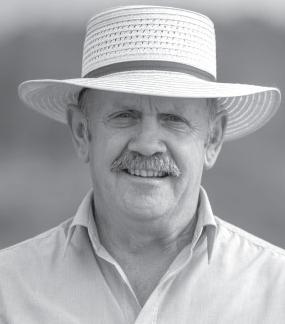
"So only the four sheep growers pick out arevalued in the trial."
Russell and Marg Bennett of Everton Upper won the Overall Fleece Awardand the Freeman Lett Trophy forMostValuable Fleece, valued at $130.85; this sheep won the same awardatthe 2022 shearing.
The Everton Upper pair also placed first in the 2023 Shearing category with an average sheep wool value of $120.26.
Toongabbie's Paulett family placed second with an average sheep wool value of $111.03, and GiffardWest's Ivan and Di Best thirdwith an average sheep wool value of $101.49.
Woodside's Jenny Foatand family took out the Most Valuable Group Carcase
Trevor Bennett from Everton Upper won the Breeder Ranking Competition, with Gordon MoonfromWulgulmerang and Alister MicalleffromBairnsdaleplacing equal second.
The Gippsland Sheep Breeders Association is considering team entrants of five or 10, preferably Merino Wethers, 2022 drop, for their next trial, with five sheep shornat eight months, three times over two years and five at 12 months.
Gippsland Sheep Breeders Association president, John Freeman, said this would ideally help provide helpful comparisons of costs andincome of two separate shearing programmes.
If interested, please contact as soon as possible, either John Freeman at 0407 685 228 orMadi Gallagher,Gippsland Sheep Breeders Association secretary, at 0497 842 949.
VICFORESTShas started using drones at night to detect endangered fauna to complywith new orders from the Victorian Supreme Court that have temporarily led to the closureofthe native forest industry.

The state's native harvestoperator is working with drone operators to trial technologythat is enabling surveys of nocturnal arboreal fauna,particularlygliders and owls. The new survey techniques detect Greater Gliders and their home ranges and any Yellow-Bellied Gliders, their feed trees and allhollow-bearingtrees to complete with the court orders.
"Using drone technology to survey removes the need for dangerous night time, foot-basedsurveying," VicForestssaidin a statement. "The safety of our staffand contractors is our highest priority."

Drone operators have been hired to conduct thenecessary surveys. Thedrones operateathermal cameratodetecthotspots when flying over aforest canopy at night.
When ahot spot is identified, the drone switches to anormal light video and uses aspotlight to zoom in to enable the species to be identified. The location of the fauna can then be recorded, along with images.
VicForests says drones allow it to conduct safe, consistent, systematicand faster monitoring than boots-on-the-ground techniques that use spotlighting.
"The new surveying method also enables our ecologists to verify detections and seek to have the data included in the Victorian Biodiversity Atlas," the government body said.

The Supreme Court's findings and orders obliged VicForests to undertake additional surveys beforefuturetimber harvesting operations, to meet the court's new interpretation ofwhatis required underthe
state'stimber regulations. The court has also ordered new additional protections beyond the specificrules in the regulations.
VicForests has rejected false and misleading allegations that these orders meant VicForests had been harvesting illegally.
"These words do not appear anywherein the 168-page judgment," it said.
As agovernment agency, it is subject to the ordinary governance obligations and control of other government agencies.


"Therehas been no view expressed by the





court that VicForests would act in any way other than in compliance with these orders.
Suggestions that VicForests is continuing to harvest illegally or is 'rogue' areunfair and untrue."
VicForests relies on pre-harvestspotlight surveys conducted by the Department of Environment, Land, Water andPlanning, in addition to spotlight surveys carried out by its own staffand contractors.
Traditionally, DELWP and VicForests do not survey an entirecoupe, but conduct
single transects about one kilometrelong in proposed coupes wheregliders arelikely to be detected. Thesespotlight surveys areconducted at night, on foot, using a spotlight and ahand-held thermal camera, in areas most likely to contain gliders. The results enabled VicForests to derive a measureofglider density.
The Supreme Court found these survey techniquesasinadequatetoprotect the endangered greater glider and yellow-tailed glider

These survey standards weredeveloped by the Arthur Rylah Institute, and arealso usedwithin theDepartment ofEnergy Environment and Climate ActionForest Protection Survey Program.
The stategovernment's GreaterGlider Action Statement No. 267 says the Greater Glider is threatenedand faces threats that arelikely to lead to extinction. Threats include habitat degradation and the risks associated with small, fragmented populations, including genetic decline.
The statement says factors contributing to elevated mortality and the loss of hollowbearingtrees include bushfire, planned burning, drought, timber harvesting and hyper-predation.
"Nativeforest timber harvestinginthe easternand central parts of Victoria overlaps with the main distribution and habitat of the Greater Glider," it says.
"Timberharvesting hasthe potential to affect Greater Glider populations through localised habitat modification,however timberharvesting occurs in arelatively small proportion of the total area of habitat occupied by Greater Gliders."
ONE of the mostdifficult issues for any Gippsland pastoralist is maintainingfeed during winter during the so called“winter feed gap”.
For many pasturespeciesgrowthislikely to slow when ambientdaily maximum temperatures arebetween 6and 150C. Regional growth rates for dryland perennialpastureatMaffrainmid-winter arereported (byEverGraze) to be as low as 1-3kg/ha/day compared to 27-49kg/ ha/day in spring.
Consequently, winter is when the value of feed is at itsgreatestsoyou mayneed to consider yourapproach to thefeed gapnow
Oneindicatoroffeed valueisthe Forage ValueIndex (FVI)updated everyyear by DairyAustralia.

It provides an accurate, reliableand independent assessment of the potential economic value of ryegrass cultivars across threedifferent species(Perennial, Annual and Italianryegrass) in anumber of dairy-producing regions across Australia.
Commonapproaches to address the feed gapmay include;


•Building up feedstocks or locking up paddocks
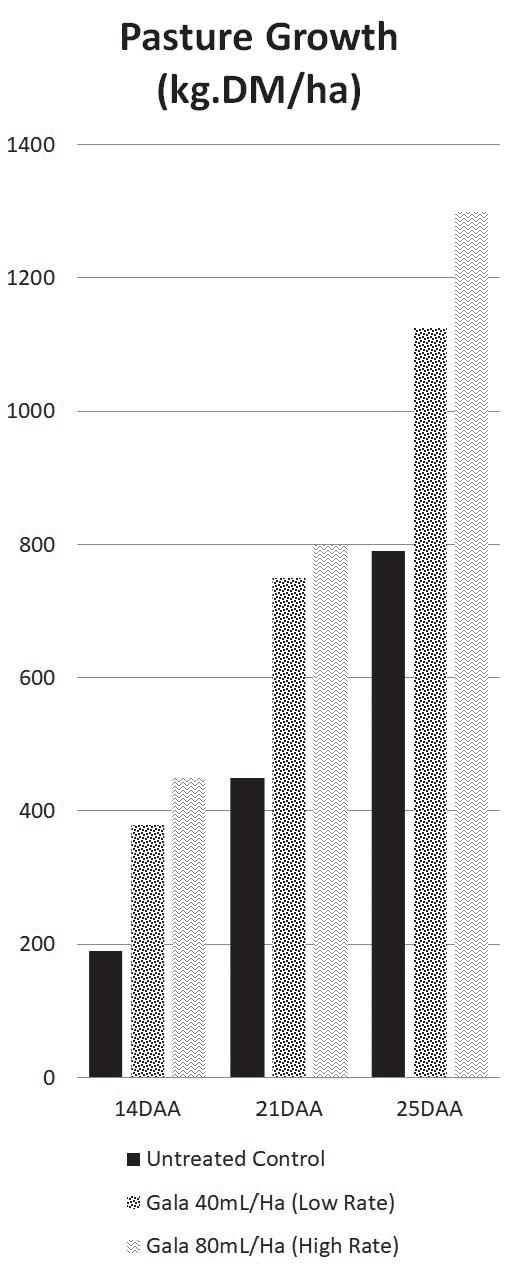
•Purchasing supplementaryfeed
•Improving/renewing pasture density or species
•Planting fodder crops
•Improving growth rates of existing pasture through good nutrition


•Maximising growthratesofexisting
pasturethrough Gibberellic Acid (GA).
GA is anaturally occurring plant hormone that stimulatesgrowth through cell expansion, in grasses,this results in stem andleafelongation.
GA is producedbyplants in higher quantities in warmer monthsand at low levels duringcooler months.
Applying GA in cold winter months stimulates plantsand can improve the quantity of feedwithoutaffectingquality
Providingmoisture andnutritionis
available, GA (e.g. Vicchem Gala†) can consistentlyprovide 350-500kg/haextra drymatter (DM)overthe 25 days after application(DAA).
This is true formostgrass based pastures (annualryegrass,perennial ryegrass and cocksfoot) commonly found in SouthernAustralia.
When winter treatments were appliedat 40mL and80mL/ha in NorthernTasmaniatoperennial ryegrass pasture then measured witha rising plate meter and reportedaskgofDM/ha bothtreatments promoted immediateincreasesingrowth ratewhich also continued throughoutthe following25days.
After which GALA†atthe 80ml/ha high ratehad increasedDMaround500kg/ ha compared withthe control, whilst thelower rate (40mL/ha) provide about 350kg/ha.
ThewinterFVI forperennial ryegrassin Gippsland is $0.42/kgDM. Thismeans thatone application of GA at the high ratewould have provided extra feed to
thevalue of approximately $210/ha. Thiswould come at aminimal estimated costof$25/ha(applicationand product). In many instancesthe cost is evenmore negligiblebecause Gala† is compatible with many commonly used herbicides and the applicationcost can be attributed to more than onepurpose.
To get the most from your GA:
•Lookfor aproductthatisformulated with EthylOleate,a derivative of canola oil whichisused extensively in agriculture(e.g. Hastenspray adjuvant) to increase penetration into theplant via the waxycuticle andultimately increase efficacy

•Ensurethereissufficientsoilnutrients and moisturetosupportand sustain rapid growth.
•Consider applyingwitha foliar source of nitrogen suchasUreaAmmonium Nitrate (UAN).
•Use multiple applicationsatminimum intervalsof27days
•Graze afew days beforeapplicationso GA can contact thegrowing point.


•Use sufficientwater ratestoprovide adequate plant coverage.
•Lookfor maximum growth3-4 weeks post-application.
•Ifapplying in high pH water,use a bufferingagentBuff-It† to reduce pH to near 5
•Alwaysreadand follow labeland if unsurecontact your agronomistor Vicchem representative.

THEY do say farming is agamble year after year
That notion was clearly evident after the Absolute Angus Bull Sale on Wednesday, March 29.
TheAutumn sale attracted agreat deal of interest to the Trafalgar South property.
Unfortunately, theinterest did not translate into many sales.
Of the 69 lots, 31 weresold.
The remaining 35 had no bids, while three werewithdrawn.
Attendees saw the top price early in the piece -lot'sone and three to be precise, each going for $16,000.
Absolute Angus principal stud Anthony Pisa attributed their price to new ground genetics and a"very strong" maternal side.
The auction was also open to digital bidders. Seven lots weresold online amid a total of 38 bits.
In anod to moderntechnology, an Elders auctioneer operated with the phone constantly held to one ear,relaying messages
from what he heardonthe ground through the other
Overall, an auction average of $8871 came in, after asking prices for each lot started at $6000.


Online buyers came from as far as Bairnsdale, Murrindindi (near Yeainthe state's high country) and Saint Germains (near Kyabram in the state's north).
Whileconceding it was atough day, Mr Pisa put on abrave face, and was willing to take some small mercies out of the sale.
"It was abit disappointing because the bulls arehigh calibre, obviously not enough buyers, but what sold, sold well," he said.
Damp conditions may have played apart in stopping people attending in person, not allowing potential buyers the chance to really examine what they might be investing in.
The salealso coincided with the end of the buying season, and with storeprices down, anatural declineinsales wasalways apossibility.
"Therehas been alot of bulls around, the


weather probably didn't do us theworld of good, but it was achallenging sale," Mr Pisa said.
"I think the dry weather,lack of confidence probably, it will be interesting moving forwardtosee how the market progresses, I think thereisalot of positivity.
"Wehave new ground, progressing into the Angus bull making alot of difference, alot of peopleare after genetics, allthe top price bulls areonnew ground, we arefocussing still on fertility, growth, and longevity, that is the most important thing."

Moving forward, Mr Pisa will continue to workonhis studboth in Gippslandand furtherafield in Echuca, whereanumber of calving programs are set to get underway.

He is expecting600 studcalves on the ground this year
Despite sales being down, those attending Absolute Angus weretreated to great hospitality, with acoffee cart serving high quality food, and some stylish Absolute
Angus merchandise available to take home. Although the day itself may have been a financial disappointment, small things like that all formpart of the auction experience, which will hopefully lead to greater returns when the next Absolute Angus Sale is held.
BECOMING afoster carer is something manyfind incrediblyrewarding.

Not only areyou giving backtoyour local community,but you’repotentially changing thelife of achild for thebetter and showing them theway to ahappy, healthylife.

The decisiontobecome afoster carer doesn’t have to happenovernight.

But when you decide it’sthe right time, enquiring about thefoster care applicationprocess is always thefirst step–and, once you’vedone it,you’ll quickly find your confidence in completingthe rest of the process


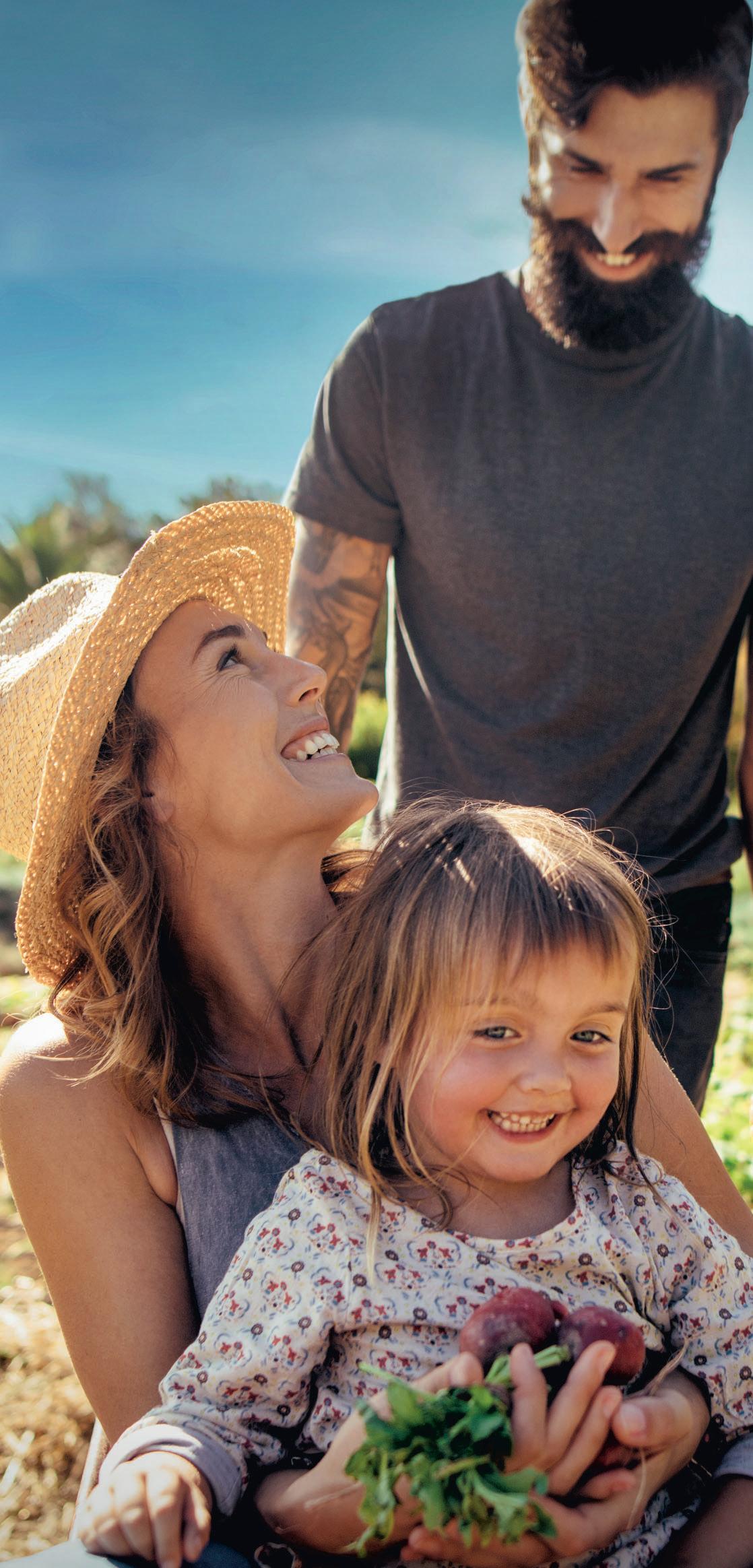
You’ll then be invitedtoattend an information session where you’ll getthe chance to askfurther questions about the process beforeyou progress onto the training component

The next step in the fostercareapplicationprocess is completing the mandatory 16 hours of training.
Thisisdesigned to letapplicants asklots of questionsaboutfoster caring,and gain an insight from experienced foster carers who’llshare abit about their foster care journey
The application process forbecoming a



foster carer cantake anywherefrom6-12 months
Thisisfromthe timeyou attend an informationsession right up untilyourfirst foster careplacement.
If you’repassionate about making apositive difference in achild’s life, Anglicare Victoria is theretoguide youon the rewarding journey of fostercare. Theirmission is to empower and support childrenwho’ve had atough starttolife by givingthemsafe, lovingfosterhomes all over Victoria.
If you’reinterested in becoming afoster carer, contactthe Carer Recruitment Team by calling 5135 9555 or visiting anglicarevic.org.au/fostering
morethan 25 per cent this fireseason at around 990, whilecrews responded to around 1360 during the 2021-22 season.
Vegetation and other outside fires were steady across both seasons, with 275 in 2021-22 and around 260 in 2022-23, and aslight increaseinthe numberof vehicle, extrication and rescueincidents this season, with 1423, compared to 1347 last season.
CFAChief Officer Jason Heffernan thankedevery CFAvolunteerfor their continuedcommitmenttoprotecting the communities in which they live for another fireseason.

“As the 2022-23 fireseason draws to a close, Iwant to express my gratitude to the morethan 52,000 volunteersacross the state who have supported Victoria through another summer,” he said. “CFAcrews have beenpivotalinprotectingcommunities through significant grass and bushfires this year such as incidents seen in Flowerdale, Northwood, Glenmore,Maintongoon and Boisdale
landowners with private burn-offs.”
The end of the FireDanger Period (FDP) will be an opportunityfor some landowners to burn-offagain, howeverit’s important that residents check the conditionsare safe and register their burnbeforeundertaking these activities.
For moreinformation contact CFAMedia on:1300CFA MEDIA (24 hours) or cfamedia@cfa.vic.gov.au
Residentsmust also contact their local
council directlyfor advice beforelighting up, as burn-offs outside the FDP may still be subject to local council laws.
“Registering your burn-offensures that if smoke or fireisreported,the incident iscrosschecked withour register, which prevents firefightersfromunnecessarily responding,” Chief Officer Heffernan said.
Landowners can register their burn-off online at firepermits.vic.gov.au or call 1800 668 511
LEADERof The Nationals, David Littleproud, has met with concerned farmers in Charlton amid growing concerns overLabor’s plans to build hundreds of new kilometres of poles and wires through regional Victoria.
Government intends to build is essential, to make surethat renewable projects have the social licence theyneedto operate in rural communities and that all alternatives areexplored.”
AFTER aseason dominated by grassfires and intermittentrainfall, thefinalfire restrictions in Victoria werelifted on Monday, April 24, marking the end of Victoria’s fireseason.
The fireseason was similar to last year’s season not just in naturebut by the numbers as well. CFAresponded to morethan 12,800 incidents, including false alarms, between Decemberand March in both the 2021-22 fireseason and the 2022-23 season.
However,smallvegetation fires weredown
“Our members continuetoworkseamlessly withour emergency service agency partners including VICSES, FRV, FFMVic, Victoria Police, Ambulance Victoria and others all year round.”
He acknowledgedthe widerange of incidentsCFA membersattend,which was best highlighted this season by CFA’s response to the Victorian flood emergency late last year.Morethan 3080 individual CFAmembers played apart in the response to the floods across the state.
“CFAvolunteers don’t stop their valued work now that fireseason is over –weknow that the colder months brings anew set of challenges, with afocus on responding to fires inside the home and supporting

Mr Littleproud saidthe $3.3 billionVictoria to NewSouthWales Interconnector West project, connecting to the Western Renewables Link, would be the biggest expense in the Victorian transmission system in morethan 50 years.
“Farmers in the region areunderstandably outraged and worried aboutpristine farmland as well as the futureoftheir communities withoutaproper planning process,” Mr Littleproud said.

“Their decision to rewirethe nation and fast-track the project has been done with little consultation and it will rip communities apart when thereare potentially other alternatives.
“The Nationals believeaSenate enquiry into the transmission lines the Labor
FederalMember for MalleeDrAnne Webster said the project would force newrenewable generation wherethe Australian Energy MarketOperator (AEMO) previously predicted congestion and wastage through spills.
“The AEMO Victorian Planner’s consultation has been tokenistic at best and has raised many questionsthat are yet tobeanswered,”DrWebster said.
“I am deeply concerned for the region and fearLabor is irreversibly ripping upthousands of kilometres of prime farmland and irrigation districts for a project that will have an enormous cost blow-outand detrimental consequences with dubious benefit, according to the views of other experts."

































































Philip HOPKINS
TRUST is important in business, but Wombat Honey has takenthat quality to anew level: ithas faith that its customers will paymoneyfor honey even when there is no seller present.
The sales point, alittle yellow hut adorned with abee logo on the side of the Princes Highway just west of Orbost, operatesona honesty basis. Yes, thereisacamera inside that takes photos of people who don't pay, but according to beekeeper Glenn Lavell, buyers overwhelmingly do the right thing.
Mr Lavell is the 'face'and thirdgeneration member of the family business, along with brother Jason and their second-generation father Paul, who has led the development of the honey enterprise over the past 10-15 years. Their grandfather/father hadstarted the business as ahobby years before.
"I fit in as marketingand packingthe honey.Paul and Jason arethe beekeepers," said Mr Lavell. They arethe ones who are out in the field, trucking beehives around on pallets.
How many beesdothey look after?"You'd have ajob counting bees in ahive,"said Mr Lavell, but on average, four hives make up apallet in the field. "They have ways of separating the bees and the honey; they can then take pallets of honey from the site to the shed, and then process them offsite.

"Thebiggest source forabeekeeper is to find asource of nectar (the super rich liquid produced by plants from whichthe bees make the honey). They look for trees to see how they areflowering. They know areas; they areintune with the geographic area of Victoria. They know wheretrees should be."
Mr LavellsaidJason and Paultarget aparticular area, such as the grey box, flowering in autumn. "They know where
specific grey boxes are; they then put the beehives as close as they can to the source, usually at the foot of the trees. They put an array -upto 20 pallets in the local area," he said.


This could be on private property under an agreement with the landowner or on state government land for which they pay royalties.


Wombat Honey has about 1600hives; about 100 produce queensbees,not honey, but the bulk produce honey. About half a dozen bee businesses operate in Gippsland
The biggest current problem for all players is the presence of the Varroa mite, an external parasitic pest that attacks and feeds on honey bees. The Varroa mite can reproduce only in ahoney bee colony.
"It's been in the world. Fortunately, we have not had to deal with it -ithasn't happened hereyet; the spread has not left New South Wales," Mr Lavell said.

"It targets the bees like atick. It's like having abasketball-sized tick on you -it latches on to the bee and takes that size compared to abee and sucks the life out of the bee. From there, no bees, no beehives
"However, the biggestconcern is the restrictions it has in place -similar to COVID."
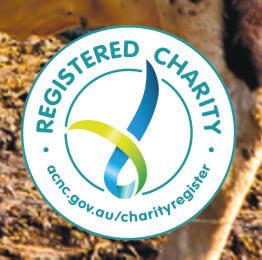


Lockdowns in NSW have had an impact. "Werely on the Riverina to produce reliable sources of honey," he said.
Wombat Honey's operational travels go beyondGippsland, butnot this year due totravelrestrictions. "Wedohave issues travelling over theborder, we can'tdoit now."
At any time, Wombat Honey has up to sevenoreight different varieties in the shop, but may produce 10 o12. "I prefer purehoney.Wecan travel the bees to a location and mix 50-50. It can be still anice honey, but purehoney does taste better
and you can market it as one honey type," Mr Lavell said.
"There's multiple, hundreds of trees; if they produce nectar,then bees can produce honey from them,soI've got an array of different samples in the shed. We've had 20 in thepastthree yearsthatwehave produced and packed for marketing."
The roadside sales -the bulk of the sales -are awinner



















"They are so visible.Wehave multiple outletsdown the line, as far east as Orbost and Cann River and as far west as Neerim South, and arelooking to Melbourne," he said.
There is a'gentlemen'scode' amongst honey makers.
"If another honey producer is in ashop, that may not work for the shop owner
“If we enter ashop wherehoney is sold, the silent rule is not to intrude on someone else.


“It works better for each of us if we find

anotherplace withouthoney. We can benefit ourselves by doing that," he said.
Glenn said the company was definitely looking down the line, towards Melbourne, for further outlets.
He is contemplating buyingaheating facility that can produce morevolume.

"Wehave plenty in our stocks; two beekeepers can produce alot, morethat we can sell,"hesaid,but with abiggerpacking facility,the business couldincrease the volume and sellits products further afield "It's the logistical route, but it needs half a dozen placestomake it worthwhilefor fuel. Youcan makeit in aday with drop-offs and deliveries."
It's afamily business; it's all about teamwork.
"I work for myself and have no employees. We help eachother;Ihelp withprocessing the honey, they help with packing the honey," Mr Lavell said.


HAZELNUTS arerich in fibre,vitamins, minerals andother nutrients,contain no cholesteroland areanexcellent source of monounsaturated and polyunsaturated fats.
Hazelnuts aremostly sold in-shellto the domestic market through Health food shops,farmers markets,specialist supermarkets and road-side stalls, etc. Roasted hazelnut kernel is used by confectionarycompanies, biscuit,cake and ice-cream manufacturers and chocolatiers.


THE Hazelnut industryinAustraliashows enormousgrowth potential.
The Australian industrygrows and produces only about 300tonnesof hazelnuts but imports around 3000 tonnes.
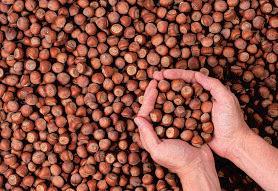
Thegeneralpublic arenow recognising thenutritional and healthbenefits of fresh hazelnuts.
Often imported nutscan be several monthsold and don’thave thesame sweetflavour of freshlygrown local product.
The hazelnut industry has recently produced the “Australian Hazelnut strategic blueprint” paper detailing allaspects of the industrylooking forwardto2030
This is available as afreepdf download through AgriFutures (a government body providing funding to newand
emerging industries).https://agrifutures. com.au/product/australian-hazelnut2030-strategic-blueprint/

HAZELNUT NurseryPropagators (HNP) is themain hazelnuttreepropagation nurseryinAustralia and is situated in Gembrook, Victoria.
HNP was established in theearly 1990’s in Megalong,NSW
In 2010 allnursery operationswere obtained byTrufficultureand moved to



Victoria to developthe hazelnutindustry in thisstate.


Many regions in Victoriawith warm summersand amoist, cool winter climate areperfect to develop successful sustainable hazelnut productionfarms Gippsland, the Yarra Valley andthe DandenongRangesare some of these regions
Hazelnut NurseryPropagators was formed to produce true to variety planting material for thedeveloping Australian HazelnutIndustry.
Extensive research into the Oregon hazelnut industrywas conductedand truetonamevarieties of hazelnuts were imported
Theimportedvarietiesweresubjected to intensive screeningfor pests and disease by Australian Quarantine Inspection Services(AQIS), overa 16 month period in Sydney,before AQIS releasedthemfor propagation.
Thenursery propagation practices wereadoptedfromthe system used by Oregon StateUniversity (OSU) wherea scientificapproachwas used to develop arange of suitable pollinisersand main varieties arematched to provide excellentpollinationofall trees. HNPcan providecultural advice on growing thedifferentvarieties anda plantingpatterndesignfor theorchard. Stockinthe form of whips is availablefor plantingfromJuly to September
Full instructionfor planting will be given with stock.
Please visit www.hazelnuts.com.au for more information.
HAZELNUT bare-roottrees (known as whips)are best plantedinJulyand
August
Therefore thosefarmers wishing to plant thiswintershould placeorders now to avoid missingout. Email to info@hazelnuts.com.aufor pricingoranorder form.
Alternatively phone Colin on 0409 717401
HNP also has starter packs of suitable matched varieties for thoseinterested in giving hazelnutsatry

HNPhas producedane-booktitled “Cultivating hazelnuts in Australia”. The cost to registeris$55,however it is freewithcustomers that purchasea minimum of 100trees
TRUFFICULTUREisa large growerof truffle colonisedtrees.
They produce the famous French black truffleaswellasawhite trufflecalled “Bianchetto”
These arecolonisedmainlyonoak varieties as wellashazelnuts. See the website for further informationon truffles www.trufficulture.com.au andtocontact them foradviceonsetting up atruffiere or hazelnutorchard


THEVictorian Farmers Federation’s (VFF) Stock Sense Project is seeking expressions of interest from Victorian livestock producers to join the Stock Sense Network Group to help increase engagementinanimal health, welfare and biosecurity.

VFF Livestock President, Scott Young, said it remainedessentialthat livestock producers themselves have asay on these important issuesfor the livestock industry. “Victoria is a leader in animal health, welfareand biosecurity and we need to ensure we stay ahead of the curve,” he said.
“We’reasking all interested livestock farmers to register theirinterest to help provide the important feedback needed to shape the futureofour local industry.
“Knowingexactly what is happening in the community will help the team provide targeted resources and solutions.”


Atotal of ten Stock Sense Network Groups throughoutVictoria exist and the VFF is encouraging new faces to join and provide feedback on animal health and welfare andbiosecurity issues specific to each region as well as the broader Victorianlivestock industry.
The opportunity is open to all Victorian livestock farmers and anyone interested can register online or email the VFF’s Stock Sense team at stocksense@vff.org.au
Stock Sense is funded by the Cattle Compensation Fund and Sheep and GoatCompensation Fund andis proudly delivered by the VFF






Herefords has expanded their sireselection with premium bulls fromTasmanian studs Valma Herefords and Quamby Plains.
Paying $30,000 and $16,500 for Valma Herefords' top two bulls,respectively,and $22,000 for Quamby Plains' top bull, a combinedprice of $68,500, Barry NewcomenofNewcomen Herefords believes he received value for money.
"Lot7(Valma Savage) was $30,000;heisavery nice bull," Mr Newcomen said.
"He isjust agood bullall around, not too high in the birthweight,sohe'll be good to join the heifers, he is just a really good bull, and since he has been home, he has just been getting better and better
"I've paid alot of money for bulls over the years for good bulls, so Ithink this bull at $30,000, it is hard to say whetherheisasgoodasthe othersornot, but he is certainly agood bull andIthink he is well worth the money."
Lot 11(ValmaSafehouse), priced at $16,500, was the bull Mr Newcomen really wanted.
"I expected to have to pay alot moremoney for him, he is perhaps not quite as pretty abull as Lot 7, but he's got fantastic growth figures, he's muscly, he's terrific, and he's got really
good hind quarters, he will put some weight in the progeny,"Mr Newcomen explained.
"I've beengoing moreinto polls, and Ifind that they'renot quite as heavy and as meaty as the horns Ihave been breading over the years, so Ithink this fella will really put some meat into my poll progeny."
Both the bull's breed plan figures arewellbalanced; Savage has agood head, good scrotaland hind quarters, dark in the coat, apreference for Newcomen Herefords, and aquiet temperament.
Safehouse should put weight on anything he sires.
Newcomen Herefords purchased Lot 7and Lot 11 from the Valma Herefords auctionin Tasmania at theend of March, with the bulls arriving at the Ensay stud in mid-April.
Mr Newcomenisnow waiting for his top bull, purchased for $22,000 from Quamby Plains in mid-April, to arrive.
"He's gotgoodfigures,"Mr Newcomen said.
"I've seen the bull; Iwent over to Tassie about amonth ago and had adrivearoundboth those studs.
"TheQuambyPlains bull, he'sanother one with alot of meat on him, and he's got good figures to match it, so Ithink he will put alot of weight and structureintomycattle, not that I haven't got it now, but I think he will improve it."
While BreedPlanfigures are important in any bull. Mr Newcomensays agood bull has the right structure.
"He'sgot to havegoodfeet, good temperament,good colour,good shapedlegs, all those sorts ofthings havegot to be right," he said.
"I think these three bulls I've got fit that; Ithink they'vebeen goodbuys, and they'regood bulls, and I'm expecting, Iam very hopeful, they will breed well for me."
Barry Newcomen and his brother established Newcomen Herefords inEnsay 63 years ago, dissolving the partnership after 34 years in 1994.
Mr Newcomenand his wife havecontinued to manage Newcomen Herefords, calving about 350 cows annually.
"We've got afew moretwoyear-old heifers calvingout than normal this year," Mr Newcomen said.
"We'vegot 80,whichisthe most we'veever had calving, and up to date,64have got live calves, which is arecordfor me.
"Wehaven't lost acalf out of heifers calving yet; we'vepulled two of them, they werealive, easy pull, but to get 64 calves without aloss is an outstanding achievement for us, or for anybody."




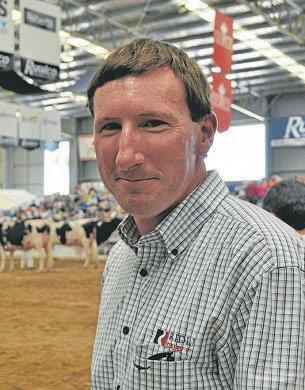




Gippsland is agreat place to learn, live and lead; just ask the community at Gippsland Grammar



Hiking Tali Karng in Victoria’sAlpine region, learning to surf on the spectacular coast at Phillip Island, exploring the expansive wetlands in between, watching the sunrise during rowing training on the Port of Sale and seeing snow for the very first timeare among the experiences the School’s students -pastand present -talk about.
And the fact Gippsland Grammar boasts the only boarding school east of Melbourne’s suburban fringe is abonus.

Sharon Mekkenfrom Newmerella near Orbost was looking for aschool with a recordofacademic excellence for her four children but soon realised afterthe children started at the ELC to VCE co-ed school it was much more.
Mrs Mekken said it was the littlest of things at Blackwood House, such as the beautiful birthday cakes, the fun dinner quizzes, structured study time and supportive boarding staff happy to drive
her children to their after-school activities that have become her measure of excellence.


She describes Gippsland Grammar’s Blackwood House boarding facilities as ‘not too big with afamily atmosphere and supportive staff’.

The Mekken’s four children have all attended Gippsland Grammar as fulltime boarders.
The eldest Cameron graduated in 2019 and is finishing off amedical degree at Monash University.
Josh finished at Gippsland Grammar in 2021 and was so inspired by his VCE teacher Jenny Dyke that he is now studying aBachelor of Commerce majoring in Accounting.
While Stella is currently in Year 11 and Libby in Year 9.
But it’s also opportunities like travelling overseas as part of aunique music collaborative performing at significant ceremonies for therecent Anzac Day that places Gippsland Grammar ahead of others.

Xavier College believes that for boarding students, in particular,the need to connect with awelcoming and caring community is paramount.

Xavier boarders appreciate the opportunity to live, work and play with their best mates.
Last year’s Captain of Boarding, Nick Honeyman, who comes from Canberra and his Year 12 colleague, Ed Plunkett from central Victoria, said that the strong culture thatthe boarding house provides almost felt like home.

“The school encourages the students
to be themselves and feel comfortable with who they are and while we live in our year groups, there islotsofinteraction with the younger students so we feel like family,” Nick said.
“Wecalleachotherbrothers because that’s how we feel.”
And this explains why numbers are growing and this year Xavier has 76 boarders, the biggest cohort for along time.”
Xavier College is entering into an excitingperiod of growth.



This includes anew Year 7and 8
building, which commenced construction in May 2022, with acompletion date of December this year and an expansion of boarding opportunities.
Boarding for Years 7and 8will be available from 2024 in addition to the traditional Years 9to12offering. Academic excellence, music excellence and boarding scholarships continue to remain available from Year 7.

Bursaries (means-based application for seeking financial assistance) are also available for boarders.

Xavier prides itself on delivering a unique Jesuit education, and 2028 will mark 150 years of developing exceptional graduates through inspiring learning experiences.





Buoyed by strong recent VCE results and APS sporting success, the College now looks ahead with excitement and anticipation.
Xavier College is very much on the move.


“Morcom House is ahome away from home for 90 girls and boys from years nine to 12,” says Tim Gallop, Caulfield Grammar’s Head of Boarding.
“Welovethat we are nestled in the heart of our Caulfield Campus, and only nine kilometres from Melbourne’s CBD, so our students have an opportunity to experience all the fantastic things that our great city has to offer.”
Caulfield Grammar has one of the longest-running and most experienced boarding programs in Australia, and is one of the few schools to offer boarding for both girls and boys.

It provides boarders with the best of both worlds –anexceptional education and anurturing family environment in one of the world’s most liveable cities.

Siblings can boardatthe same school and enjoy homely accommodation that ranges from three-bed to single-bed options which complement the learning program
All year 12 students areaccommodated in single-bed rooms.
Girls and boys reside in separate houses, andshare common recreational facilities including one of the most important locations —the dining room.
“Wewant our boarders to feel as supported and comfortable as possible in our ‘home away from home’,” Tim says.
“The dining room is the central hub of focus for our boarders, with high-quality, nutritionally balanced meals on the menu.”
Boarding students make the most of living on-campus and the myriad
opportunities available to them –including access to the school’s extensive facilities such as the olympic-sized indoor swimming pool, gymnasium, basketball courts, weights room and outstanding visual arts and performing arts spaces.
“Weguide each student to take responsibility for their own personal wellbeing, provideprograms to facilitate self-care during times of stress, and encourage everyone to seek ways they can support the wellbeing of others,” says Tim.
“It keeps on coming back to connectedness and care which includes in-house tutors, counsellors and a24/7 onsite healthcentre.”
Caulfield Grammar’s co-curricular programs alsobuild astrongspirit of camaraderie and community.
Students stay connected through extensive broad and balanced experiences –from House Sports, BBQs, movie nights and weekend excursions, to dedicated real-world learning experiences such as the Year 9CaféBusiness Program, the Kakadu Year 9Program, Year 10 Odyssey natural environment experiences, andthe Yarra Junction Campus.
“Each student is different, coming from adifferent rural or overseas home, and with unique aspirations,” explains Tim Gallop, Head of Boarding at Caulfield Grammar School

“We’re not about moulding them into our ways, rather moulding our approach around each student to guide them in following their own individual pathways and passions –beitacademic, sport, music, performing or visual arts.”


SCOTCH COLLEGE School Captain, Dion Whitfield, has aclear and determined view on leadership. “Leadership is for the betterment of others not the enrichment of the leader.Itisall about service.”
Dion walks the talk and is ashining example of how powerful words and actions can be when delivered with authenticity and purpose.
“In my case it is service to my school, to each boy who wears the Scotch uniform, to my boarding brothers who share my home andlife here, to the many groups and individuals who have trusted me to do this role, to my family and mentors who continue to support me and to theplethora of people in the Scotch family.”
Dion came to Scotch through the Evonne Goolagong Foundation.
The foundation uses tennis as a vehicle to promote better health and education outcomes for indigenous children through access to high quality educational institutions.
The foundation has aconnection with Scotch College.
It recommended Dion for one of its educational scholarships and in 2021
Dion entered Scotch College as aYear 11 boarding student, never imagining, but quietly aspiring for the role he has now assumed as School Captain.

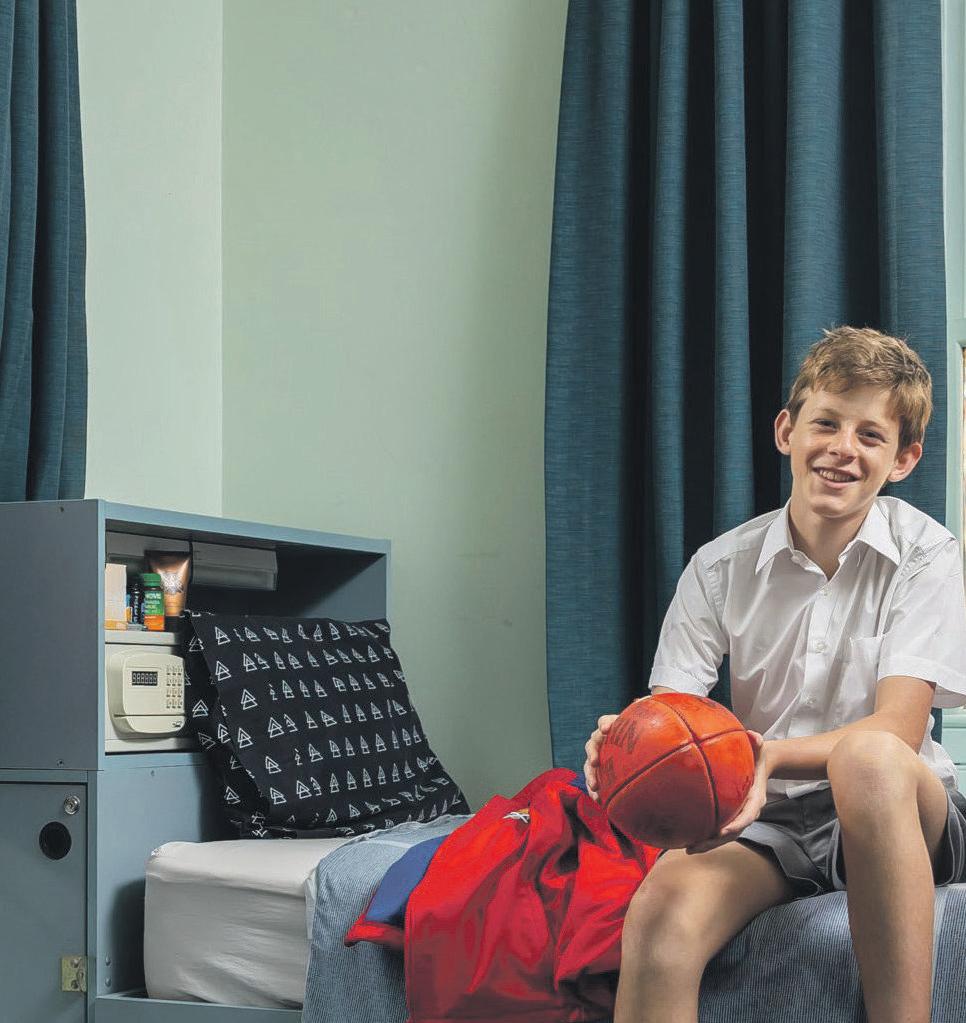
Scotch has aunique leadership process where theYear 12 SchoolPrefects are invited to apply for the position of School Captain for aYear13.
This enables the appointed School Captain, on areduced academic workload, to have bountiful opportunity
to influence the lives of the nearly 1900 boys who attend the college and the Scotch community at large.
”I love the diversity of interactions my position allows.

My role is to know the students at this school and while time consuming, Ilove getting to know themfor who they are and hearing their stories.
Iattend various year camps, and speak regularly to the student body.
Iwork with the Old Scotch Collegians’ Association to promoteour alumni, and with the Scotch Foundation to ensure the educationalexperience and vision Scotch offers is both understood and supported.
“I meet with our Principal, Dr Scott Marsh weekly as wellaswith other senior members of staff.
The school is entering anew chapter in its history with hisappointment as the tenth Principal of the school, and I sometimes feel like Dr Marsh and Ihave theopportunity to write the first few lines of this chapter together”.
Dion’s family resides in Armidale NSW and he is one of six children, having five sisters.
He never really experienced homesickness when he cametoScotch, as COVID had isolated him from hisfamily for two years.
His parents andsisters were living in WesternAustralia throughout the COVID lockdownperiod and therefore they were unable to seeDion.
“While it was hard, it actually was helpful in my adjustment to boarding”, says Dion.
“I never knew anyone when Ifirst came to Scotch so it was important for me to get involved and meet others.
Scotch was so welcoming and the staff so warm. Rachel our House Manager was like asecond mum to me.
Imade myself go out and mingle, and use the amazing facilities rather than hibernate in my room”.
Dion is now mentor to students still adjusting to life in acommunal environment.
Reuben Wilton from Holbrook in NSW, was one of thosestudents who found the advice and guidance of Dion and his older housemates vital to his happy transition to living away from home.
“If Iamhaving abad day there are always mates Ican have achat with, kick afooty or agame of tennis.

Life is good because IamatScotch.”
Dean of Boarding Mr TimByrnes emphasises that leadership goes hand in
hand with being aboarder “As asenior boarder it is incumbent upon you to be accessible and approachable for the younger boys in your house.”
Dion sums up life as aScotch boarder: “The Hill is an open, inclusive and accepting community that brings people from different backgrounds, geography and circumstances together to make the Scotch experience the best it can be.
Joining the Hill Ididn’t really think about the people Iwould meet, but it has definitely been something that Iappreciate more than Icould haveforeseen. Ihave made life-long friends and connections Iwill value always”.
Dion has completed his VCE and has been accepted into the University of Melbourne next year to study Arts and Law where he has gained aMelbourne Chancellor’s Scholarship.
Orbost local Campbell Macalister has always loved science, but wasn’t sure whereitwould take him after high school.
When ateacher suggested the Diploma of General Studies (DiGS), offered at the University of Melbourne’s Dookie campus in northernVictoria, he realised this was the perfect course to explore science further,with aview of moving into aspecialised degree.
DiGS is aone-year full time course that can be used as aguaranteed pathway to University of Melbourne bachelor degreesin Agriculture, Arts, Commerce, Design or Science.

It allows students to explore their study options before committing to a degree,while earning creditthatcan be transferred.
“I started DiGS in February and am really enjoying the university experience,” Campbell said.
“The course has agreat structure, with time spent at both Dookie and Parkville later,ifyou pursue adegree. Iwantedtocomplete both hands-on work, and experience the city, so the variety between campuses stood out to me.”
Campbell says living on-campus is the perfect way to meet new people, with a
large range of sports and job opportunities also available within the area.
“Living at Dookie is great because it makes it easy to meet people who are doing the same course and have similar interests,” he said
“Since moving I’ve joined the local footy club with other students who play footy and netball –it’s aclose-knit group.”
When the semester started, Campbell found time management the biggest challenge.
“Uni is much more fast-paced than school and it takes abit of getting used to.
I’ve learnt you need to stay on top of work as soon as it comes in,” Campbell said.
“I’m currently completing academic writing and communication, acore subject for all DiGS students, as well as biology, chemistry, and land and resource management.
Next semester,there are more subjects to choose from within plant science, animal science and economics.
“Science was my favourite subject in high school, so thevariety inscience subjectsisgreat.”
With guaranteed entry into select University of Melbourne bachelor

degrees, Campbell is planning to move into aBachelorofAgriculture.
“DiGS is set up as the perfect pathway into agriculture –ithelps me go straight into the second year Iknow others planning to move into science and biomedicine, too –there are several pathways to choose from.”
Campbell isn’t sure wherehe’ll settle down after studying.
He’s excited to experience Melbourne, and will see where life takes him, but he says the skills he’s learning would be useful in Gippsland.
“I’m planning to specialise in plant science, which would open up jobs such as agronomy Igrew up on thefamily farm,soifI can work in arolethat benefits the farming industry, that would bereally special,” Campbell said.
More informationregarding the Diploma in General Studies can be found on the University of Melbourne’s website: go.unimelb.edu.au/e3is


























SALE Floral Art Grouponce again scooped the poolatthe prestigious Melbourne International Flower &Garden Show with afirst-place winatthe VictorianFloral Art Association’s competition entitled “Kaleidoscope”.
First-time exhibitors Jeanette Cooke from Tyers and Vicki Malady from Stratfordcollaborated to create this stunning design that attracted the judges’ attention.
Featuring avariety of textured plant material and subtle colour combinations of all components, the theme was effectively interpreted with pleasing proportions, rhythm and exciting contrasts.
The Sale Floral Art group meets at 11am on the last Thursday of each month at the Sale Tennis Club, everyone is welcome. For further details, phone 0413 919 537


FARMERBrenton from Darriman is a 26-year-old sixth-generation cattle farmer, whose quest for real love has seen him take part in the latest series of Farmer Wants AWife.





Fresh offthe farm, this true-bluecountry bloke happily admits that he’s “an awkward guy” and “has never done anything like this before”.




“I’ve gotthe opportunity tofind that
special someone,” he said as he met his top favourites for the first time.







Farmer Brentonis one of five farmers preparing to follow their hearts down the road to true love.
The show returned with host Samantha Armytage and co-host Natalie Gruzlewski playingCupid, as they guide the new crop offarmers down the road to real love.
CFADistrict 10, in collaboration with the Dargo BushNursing Centrestaff, recently offered all residents of the Dargo community free smoke alarm installation to residents’ homes, targeting the most vulnerable to house fires.
District 10's community engagement coordinator,Jodie Burt, led the program, which was advertised and promoted throughout the community by Dargo's bush nurses.
Ms Burt and three CFAmembers attended Dargo last month, visiting 13 homes and installing morethan45smokealarms with 10-year lithium batteries, provided at no cost by the south-east region community safety unit.

“I was surprised to see that so many homes did not have any smoke alarms at all, orthosethatdid wereeither over
50 yearsold, ornot working at all, and installed in incorrect locations in the homes," Ms Burt said.
One resident had been living in Dargo his whole life, never thought about smoke alarms, and had never tested the onealarm he had in his 150-year-old home.
District 10's plan is to continue to target remote communities like Dargo to further deliver the service, assisting Gippsland's most vulnerable community members.
Allan Cracknell, Peter Ryan, Jodie Burt and John Upton and the wonderful Bush Nursing Team in Dargo wereall thanked by the CFAfor supporting the coordination of this important service.
For moreinformationaboutthe program, or if you know someone that may benefit from the service, send an email to firesafetyoutreach@cfa.vic.gov.au
THE newest editions of cereal and pulse disease guides arenow available to download as mobile-friendly e-books from AgricultureVictoria’s website.
The 2023 Cereal Disease Guide and 2023 Pulse DiseaseGuide ranksusceptibility of new and commonly grown grains and pulses such as wheat, barley, oats, lentils, faba bean and chickpea.
The guideshavebeen produced with support fromGrains Researchand Development Corporation (GRDC) and provide updated disease ratings and advice on reducing disease risk this season.
Growers should consult the current disease guide forthe latest ratings and definitions to plan disease management.
AgricultureVictoria’s cereal pathologist, Dr Hari Dadu, said the release of the updated cereal disease guide complemented earlieradvice this season from Agriculture Victoria.
“They contain the latest disease resistance ratings to assist growers with their crop disease management plans and help prevent grain yield loss this season," Dr Hadu said.
“Within the guide, we advise on how to proactivelymanage crop disease risk particularly stripe rust, which wreaked havoc in wheat crops last year
“Choosing avariety thatisless susceptible to disease using the ratings in our guide is arecommended step to keep disease at bay.

“It’s also important for cereal growers to avoid managing disease solely through fungicide treatment; the guide has advice on reducing the risk of fungicide resistance through crop rotation.”
For pulse growers, this year’s edition of the Pulse Disease Guide will be of particular interest to growers as it includes new botrytis grey mould ratings for lentils. Agriculture Victoria’s pulse pathologist, Dr Joshua Fanning, said the varieties GIA Leader,PBA Hallmark XT and PBA Kelpie XT had been provisionally downgraded. These varieties would need to be monitored moreclosely during 2023.
“It’s essential for growers to use the latest edition of the disease guide to inform
their crop disease management strategy as disease ratingsare reviewedand revised annually," Dr Fanning said.
“Lastyear’swet conditions werehighly conducive for pulse diseases across Victoria and have impacted the ratings of some varieties and some disease ratings have changed to reflect this.”


“Due to the high risk posed by stubble borne diseases growers should not double crop paddocks.”
The 2023 Pulse DiseaseGuide and Cereal Disease Guide areavailableon the AgricultureVictoria website and from AppleBooks.


BIG upgrades of Gippsland's major road routes, including town bypasses, arekey elements of the region's new freight plan, which also emphasises resurgent rail and opportunities for using both sea and air to expand Gippsland's $18 billion economy.
The Traralgon bypassisthe top infrastructurepriority, followed by heavy vehicle and truck bypassesofLeongatha and Sale, athirdinternational airport and the Warragul-Drouin roads network.
The master plan has been prepared by the Committee for Gippsland (C4G) and the Gippsland committee of Regional Development Australia. It was formally presented to the federal Minister for Regional Development, Local Government and Territories, the Hon Kristy McBain. The freight infrastructuremaster plan, which is for the period 2023-2028, identifies 34 priorities developed withindustry feedback, including 30 infrastructure-type projects and foursupporting initiatives. and strategies. It supersedes the previous 2013 freight plan.
C4G chief executive, Tony Cantwell, said the plan was along-termpriority of C4G and was critical to maintaining essential services for arapidly growing and transitioning Gippsland.
Theplan notes that dairyand livestock areGippsland's traditional strengths, with Gippsland providing 28.6 per cent of the state'sdairyand 23 per centofits beef. "Demandfor protein and Gippsland's renowned productivity coupled with industry innovationinspecialised and high-value products will see growth in this sector and thereforeadditional freight opportunities," the plan says.


Also, Gippsland is an ideal location forthe continued development of the food and horticulturesectors. "This growth will involve investment to identifymarket opportunities and overcome freight challenges to ensure Gippsland's clean, green and fresh produce can get from paddock to plate as efficiently as possible."
The plan's other highest priorities are major upgrades to the PrincesHighway westof Longwarry, including reinstating the 100+km/h speedlimit;the Princes Highway Sale to Bairnsdaleduplication; major upgrades to the Princes Highway east of Bairnsdale; major upgrades and duplicationofthe SouthGippsland Highway; and additional turnouts and sidingson the Gippsland railway line.
The supporting initiatives aredeveloping the freightindustryand workforce, improved partnerships betweenthe freight industry andgovernment, local road funding and investment including first and last mile, and areview of the road safety barrier guidance with industry input.
Most freight is transported on the road network, mainly the Princes (A1) and South GippslandHighways,but alternatives to the A1 include the C245 from
north-easternMelbourne through the Yarra Valley through Gippsland. "This arterial road, for example, has the potential to be an additional freight route with investment made towards upgrades, passing lanes and safety works," the plan says.
The plan highlightsthe need for a Traralgon bypass. "As freight volumes grow, it is becoming an increasing point of delay and the amenity impacts on the town are worsening," it says.
Final approval of the route/alignment is being held up by the proximity to the Loy Yang mine. "Advocacy is required to push for adecision on proximity of proposed route ASAP,orthe route changed."
The plan saysthe long-termprogram for an alternate Sale truck route is under way with funding for some infrastructure.
"However,the remaining elements need to be planned and funded," the plan says.
The plan's second priority is the 100-yearold state managed Warragul-Drouin arterial road network. "It's putting the brakes on business and industry and impacting liveability for residents. the solution is anew arterialroad network that's better for local businessand the community,"the plan says. As ahighpriority, funding is required for further planning.
The third priority is aLeongatha heavy vehicle bypass. "As freight volumes grow, it is becoming an increasing point of delay and the amenity impacts on the township areworsening," the plan says.
"Stage 1ofthe heavy vehiclealternate route has been completed. Stage 2has been planned and should be delivered as apriority."

Next in line is aSale alternate truck route.
"The long-term program of developing an
enhanced freightalternative to travelling through central Saleis underway with funding for some infrastructure, however the remaining elements need to be planned and funded," the plan says.
Similarly for Bairnsdale, the planemphasises the need for asouth-west alternate freight route. This had begun and needed to be completed."Thisisa major issue for local industry, freight providersand rail aspirations so thereforeneeds to be a planning for futureworks," the plan says.
While 'road is king', industry said there was acritical supporting role for rail, air andsea to create an integrated freight network to enhance productivity.
The plan sayssea freight in Gippsland could be abig winner from economic developments. The Barry Beach Marine Terminal at Corner Inlet, aprincipal port for the Bass Straitoil and gas sector for decades, could benefit from the projected freightvolumesfromthe offshorewind farms, together with safety risk mitigation and operational efficiencies.
To become ageneral cargo hub, the port wouldrequireamodest level of channel deepening -10metres. "The Barry Beach channel has been dredged on anumber of previousoccasions, most recentlyin2010," the plan says.
Channel improvements would create avenuesfor bulk materials handling. "Gippsland currently receives 30-40 per cent of the 1.4 million tonnes per annum of fertiliser that is shipped into Geelong; this upgradedinfrastructurewouldenable direct shipments and handling into Gippsland's own regional port," the plan says.
This would be an economicboost, reducing both costs to producers and rail and
road transport congestion through the increasingly busy Melbourne corridor
Ongoing advocacy and funding arealso required to maintain the Lakes Entrance port, critical for the fishing industry, and Port Welshpool, used for stock transfer
The planemphasises the need for upgrades on the highways, such as improving bridges. For example, Dyers Transport has depots in Morwell, Sale and Bairnsdale, with afleet of morethan 200 trucks.
One of its biggest efficiencyimpediments is weight limits on bridges. Dyers has 15 loads per day between Gippslandand Melbourne. If the existing High Productivity Freight Vehicles(HPVP)networkwas extendedalong the PrincesHighway through Gippsland, the company could lift the payload on theirtrucks by 11.5 tonnes.
This would allow Dyers to carry an extra 63,000 tonnes of general freight per year, equatingtoabout $1.95 millionper annum in direct economic benefit while reducing the number of heavy vehicles on the network by three trucks per day.
Athirdinternational airport is ahigh priority under the plan, requiring ongoing advocacy and funding. "The decentralisation of congestion through Melbourne and growth awayfromMelbournealone makes this apriority alogical one from afreight efficiency point of view, "the plan says. "The Gippsland-centric opportunities in the food and manufacturing industries via the air freight efficiencies would be remarkable."
Funding is also required for upgrades at Bairnsdale, West Sale and Latrobe regional airports to support specialised freight and industry.
Connecting to the Port of Melbourne rail shuttle network to ensurerail plays abigger role in Gippslandfreight is akey aim of the plan. Funding is neededfor afeasibility study into aGippsland line freight terminal, located to theeast of Melbourneon the line, which can transfer from truck to rail for transportthrough Melbourne to Port of Melbourne.
The Morwell intermodal terminal and Maryvale need continued government and industry support to establish further services. Maryvale now runs only one train per day.
Similarly, the plansaysthe Bairnsdale intermodal terminal needs ongoing government and industry support.
Otherinfrastructure prioritiesinclude aBairnsdale southern alternative freight route, Wonthaggi alternative route, Stratford roundabouts, the duplication of the Mitchell River bridge to the Great Alpine Road at Bairnsdale, the Strzelecki and Highland Highways, aWarragul-Korumburra freight corridor,the Phillip Island Road corridor Bass Highway, and norths-south arterial links -Great Alpine Road, MonaroHighway and Benambra-Corryong Road. The report is available at committeeforgipposlnad.com.au
An open letter to Treasurer Jim Chalmers regarding the Budget


Dear Dr Chalmers, Thereʼs acrisis in our country you can fix in your first budget, at no extra cost.

With the stroke of apen you could help secure the future of critical regionalnews services, using money already allocated in the budget.
All you need to do is allocate afairer percentage of the federal governmentʼs advertising budget to local and regional news services, rather than spending almost allofitwith corporate capital city media and foreign-owned digital platforms (which donʼt produce any content or employ any journalists).
This can be achieved by simply adopting the Victorian Govt policy that mandates a weekly full page government advertisement in every regional and community paper

Local and regional newspapers connect more than 80% of the country,but they get almost 0% of the government advertising spend.
In an era where false news spreads faster on social media than the truth does,trusted local news services reach more regional Australians than any other medium. And unlike other media, every government dollar spent with alocal newspaperisalso an investment in regional journalism jobs. This shouldnʼt be controversial.
Arecent parliamentary inquiry recommended that aminimum of 20% of government print advertising should be placed with regional news services. Arecent study conducted by Deakin University recommended the same thing. In fact, the Minister for Communications, Michelle Rowland, has been advocating for more regional newspaper advertising for many years.
We know there may be bigger budget issues, but this small policy change would be a simple and fair solution to agrowing problem for regional Australia. Apolicy that ensures weekly federal government advertising is placed in regional newspapers would be great news for the country. And it wonʼt cost you acent.
Yours sincerely,
Tony Kendall President Managing Director Country Press Australia Australian Community Media
 Andrew Manuel
Andrew Manuel
ANEW Environment Protection Authority Victoria (EPA) registration for farmers using waste tyres in silage production will help reduce the risk of fireand harmtohuman health and the environment.
Stockpiled tyres can pose abig fire risk. Tyrefires arehardtoextinguish, emit toxic smoke and can contribute to harmin the environment. Having an understanding of afarm’styrestocks will help mitigate the risk and severity they pose.
“Silage production is critical for a healthy agricultural industry,” said the director of permissioning and development, Con Lolis.
“The registration strikes the right balance between making surefarmers can feed their stock while also helping to reduce the risk of harmto human health and the environment,” he said..
Mr Lolis said farmers, or anyone using and/or storing five cubic metres (about the size of asmall skip bin) of waste tyres as weights for silage production, have until 1July 2023 to apply for a registration.
“We’ve made the process to apply for aregistration as easy as possible.It’s free, fast and can even be done on your smart phone.
“Byhaving farmers and others,who use wastetyres for silageproduction, apply forthis free registration, we are all doing our part to ensure waste tyres arecorrectly stored and managed to help reduce the risk of fireorenvironmental harm.”
For moreinformation and to apply for aregistration by July 1, go to the EPAwebsite.
DISADVANTAGED workers now have financial help to get into the horticulture industrythrough grants torecruitand train 100 green-thumbed people looking to work in nurseries and commercial gardens.
The Minister for Employment, Ben Carroll visited Fleming’s Nursery in Monbulk to officiallyopenapplicationsfor the $1.9 million Jobs Victoria Nursery Workforce Project, which will place people into roles including retail assistants, truck drivers, processworkersand productionline assistants.
Fleming’s Nurseries general manager DanielJansen,said theirfamily-run business welcomed the support of the inclusive employment program. As one of Australia’s largest wholesalenurseries for fruitand ornamental trees,Fleming’s Nurseries offers long-termcareer prospects,and plans to create five new jobsfor people to workasnurseryhandsand dispatch workers through the program.
These ‘earnand learn’ roles provide workers with bothpre-employmentand on-the-job training, boostingskillsand creating an inclusive workforce community.
Horticulture is an important partof Victoria’s economy, generating $2.5 billion annually and employing morethan 24,000 people. With 75 per centofbusinesses in the industry looking to expand, this programwill help strengthen the skilled workforce pipeline.
The Jobs Victoria program is being deliveredinpartnership with Nursery and Garden Industry Victoria. Jobs will be mostly based in east and southeast
Melbourne but therewill also be some roles in regional Victoria.
This program will prioritise jobs for people who need additional supporttofind work, including those from culturally and linguistically diverse backgrounds, young people, women over 45, and people who arelong-termunemployed.

Recruitswillhaveguaranteed workfor

12 months, and receive pre-employment and on-the-jobtraining, mentoring support and aworkplace buddy.
There may also beopportunitiesto undertake free and formal qualifications. For more informationvisit jobs.vic.gov.au or call the Jobs Victoria hotline on 1300 208 575.
MEDIAN land prices in Victoria jumped by 27.8 per cent last year after amassive 40 per cent rise the previous year,according to Rabobank, with all regions continuing the positive trend in land value growth.
Nationally, Australian agricultural land is on track for another year of strong price growth in 2023, agribusiness banking specialist Rabobank says in its newly-released annualAustralian AgriculturalLand Price Outlook.
The report, supported byfarmland sales data from DAS (Digital Agricultural Services),says three consecutiveseasonsof good financial performance for Australia’s farmsector -driven by highcommodity prices and good weather conditionsfor most of the country -isset to once again fuel “double digit” percentage growth in agricultural land prices for the year ahead, albeit easing from the recordnear-30 per cent increases seen in both 2022 and 2021.
The DAS data set comprises genuine rural sales and excludes lifestyle and non-market transactions.

In Victoria, the valueofgrazing areas rose by 24.7 per cent to $21,725 per hectare, while arable farmland was up 29.8 per cent, reaching an average of $13,577/ha, the second-highest value in the country.
Dairy areas increased by 13.8 per yearon-year,with an average price of $19,297/ ha.
"Regions that areclose to urban centres and have amix of urban sprawl and rural markets, demonstrate the impact of citydweller demand for farmland," Rabobank said. However,buyer behaviour in dairy was "not as robust as in recent timesand major discounts aretaking place for large-scale farms valued at over $10 million".
Elders rural property update 2022 found that the median price per hectareinVictoria eased by six per cent in the final quarter driven by mixed performanceacross regions with Gippsland and South Central contracting.

Transaction volumes increased sharply by 17 per cent in the quarter,particularly for larger parcels in the Wimmera-Mallee and South West.
In the calendar year,prices rose by 22.5 per cent to $12,937/ha, the secondconsecutive year of growth above 20 per cent. Thiswas driven byvolumesdeclining
sharply by 45.9 per cent to atotal of 722.
Most of the decline occurred in the larger parcel size range."This shiftedtransaction mix towards higher priced smaller parcels," Elders said.
In thelastquarter, Victoria's median farmprice fell by six per cent to $14,256/ ha, whereas comparing the last quarter of 2022 to 2021, the median price was up 13.3 per cent.
Therewere186 transactions in the last quarter,up 17 per centon the previous quarter butdown year-on-yearby35.2 per cent


The bank’s analysis -ofshows agricultural land prices across the country rose by 29 per cent (medianprice per hectare)in2022, with cropping land increasing by 29 per cent, livestock grazing land by 26 per cent and dairy by 29 per cent.
Agricultural land prices werefound to haverecorded doubledigitpercentage growth on the previous year in all states, withSouth Australianfarmlandprices rising the most -at34per cent.
Report author,RaboResearch agriculture analyst Vitor Pistoia, said agricultural land prices across the country had soared again in 2022, with the “macrosettings” having beenfavourable for landpurchases and farming profits in Australia.
“Prices for most major commodities
reached record highs, widespread rainfall supportedagricultural yields- which also surpassed historical records in some regions -and interest rateswereathistorical lows for almost half the year,” he said.

While adecline in agricultural land prices is not forecast, the bank cautioned thatafter the estimated doubledigit percentage price increasethisyear, abig slowdown in the “pace” the massive price growth in “massive” in recent years is expected from 2024 potentially through to 2028.
Mr Pistoia said “farmland sale prices in early 2023 werestill setting new records”, with prices in 2023 expected to continue to rise.
“Albeit to alesser extent to the previous year as the combination of high property prices and increasing interest rates -along with the expected onset of El Nino, and potentially drier weather for manypartsof Australia, which may hamperagricultural yields -will be impacting farmers’ appetite for buying land,” he said

Mr Pistoiasaidthe incomeoutlook for Australian farmers in 2023-24 was “solid and positive”, withabove-historical-average prices for agricultural commodities still granting good profitability and recent high costs for farminputs now easing.
However,looking out from2024to 2028, he said -with the recordhighs for

agricultural yields and commodity prices seeninthe past three yearsunlikely to be repeated -therewereexpectations of a slowing pace in the growth of land prices, although with no price declines expected.
“Commodity prices arelikelytoremain at good levels for farmers for the next one to twoyears.However,the drier forecast may result in lower yields and reduced margins, while rising interest rates will curtail longterminvestment plans,” he said.
“Currently, cash already available in the system and stocks of grains and livestock ready to enter the market remain the key factors driving land price growth.”
For now, the report said farmers’ appetite for propertypurchase remained strong, with recent Rabobankresearch -conducted in the first quarter of 2023 -showing seven per cent of Australian farmers intend to buy land in the next 12 months.



Based on the analyseddata, the report found agricultural land deal sizes were increasing. Especially in Queensland and NSW,Rabobank said, where22per cent and 14 per cent of sales respectively exceeded $10 million.
“Andoverall,according to our data set, 11 per cent of cropping and 13 per cent of Australian grazinglandsales in2022 exceeded $10 million,” Mr Pistoia said.

VICTORIAN fox andwild dog collections areunderway for 2023.
Submit entirefox scalps for a$10 rewardand/or entirewilddog body parts for a$120 reward.
Participants need to registerfor the new digital payment system and should refresh their knowledge of the terms and conditions to ensuretheir submissions areacceptable. Visit:agriculture.vic. gov.au/bounty
The SouthEastVictoria collection schedule for May is listed below:

Ellinbank collections: fox and wild dog, 1301 Hazeldean Road, Ellinbank, Monday, May 22, 2-4 pm.
Bairnsdale collections: fox and wild dog,35Bairnsdale–DargoRoad, Bairnsdale, Thursday, May 25, 12-2 pm.
Maffra collections:fox and wild dog, 1StratfordRoad, Maffra, Wednesday, May24, 9-11 am
Yarram collections: fox only, Rodgers Street, Yarram, Wednesday, May 24, 2-4 pm

Woori Yallockcollections: foxonly, Symes Road, Woori Yallock, Thursday, May 25, 12-2 pm.



Further collections will be held in July, September and October
AMALLEE farmer has been fined $65,000 and disqualified for 25 yearsfromowning any farm animalor being aperson in charge of any farmanimal after pleading guilty to animal cruelty charges and being sentenced recently at the Ballarat Magistrates’ Court.

AgricultureVictoria Program Manager AnimalHealthand WelfareCompliance, Daniel Bodesaid StevenRalston was convicted of 14 charges, including multiple failures to provide proper and sufficient food and drink to his livestock, afailure to treat flystrike sheep and abreach of apreviously imposed order by the court requiring Mr Ralston to provide appropriate caretohis stock.

“The court heardthe charges related to afailuretoprovide food and drink and an outbreak of flystrike in aflock of morethan 1320 sheep at Mr Ralston’s properties in Corack and Chinkapook between March and April 2020.”
Mr Bode said AgricultureVictoria officers first attended the property in early March 2020 in response to an animal welfare complaint.
“Duringthe firstinspection, officers observed approximately 500 head of sheep of mixed age and sex with long wool and dags.
“Some wereobservedtobewool blind, preventing them from finding food, shelter and escaping predators.
“Ten sheep, including young weaner aged sheep wereobservedtohave flystrike, and one was euthanised due to its poor body condition,” Mr Bode said.
Mr Bodesaid MrRalston alsofailed to register adequate Property Identification Codes (PIC) information for his Corack and Chinkapook properties. His PIC covered17 parcels of land in Corack,but not the other 16 parcels of land which he had livestock on in Corack. Additionally, Mr Ralston did
not have aPIC for the seven parcels of land in Chinkapook.

He said officers attended the properties on six separate occasions and issued several Notices to Comply.
“Over this time, sheep werefound in barrenpaddocks,and shearing sheds without adequate food or drink and appeared weak and lethargic.
Following the Plea being entered in late 2022 Departmental officers wererequired to intervene on Mr Ralstons’ properties at Chinkapookfollowing further concerns with the welfareofthe animals.
Over the course of anumber of inspections alarge number of sheep werefound deceasedor in such poor condition that they wererequired to be humanely euthanised. Given the condition of the sheep, the Department implemented an immediate seizureofthe majorityofthe remaining
animals.
Magistrate Saines stated the level of neglect and suffering experienced was appalling and confronting, and what was most relevant was that this offending occurredbefore, duringand after the accused was being sentenced for earlier similar offences.

“This is aremindertoall livestock producers that animal cruelty will not be tolerated by the Victorian government or the community,” Mr Bode said.
“If you areresponsiblefor thecareof any animal, you haveaduty to provide for that animal including ensuringdisease or parasites aretreated appropriately.”
Anyone wishing to make aspecific complaint in regardtothe welfareofcommercial livestock on Victorian farms can phone Agriculture Victoria on 136 186 or aw.complaint@agriculture.vic.gov.au
THIRTY years ago, Australian Pump Industrieswas born in ashedinArcadia on theoutskirts of Sydney
The original team of four,partofthe Lorenzfamily,knew that to starta new pump businessinanovercrowded marketwould requiresome unique thinking and adifferent approach.
“The justificationfor starting thebusiness was that we wouldbedifferent and better,”said Aussie Pumps Operations Manager,HamishLorenz.
The pump marketwas dominated by corporatecompanies.
Their primaryresponsibility is to shareholders, sometimesatthe expense of the customers.
Aussie’splan was to compete by putting the user first, producing agreat product and putting it on themarket at fair prices.
“Weforgedallianceswith someofthe world’s bestmanufacturers of componentry. CompanieslikeHondafor petrol engines and Yanmar for diesels, and had afirmpolicy to useonly firstworld components”,saidLorenz
AFTER30years of intense product development, the operation hasgrown intoahighly significant andquite unique supplier of pumps for theAustralian market.
The principles remain unchanged, products have to be better than those available on themarket,supplying featuresand benefits to endusers above theirexpectations.
Now in their30thyear,Aussie Pumps has therighttocelebrate the market acceptance of their products
“Weare the descendants of dairyfarmers, and we havea unique appreciation of Gippsland’srequirementsfor products
that work well, are safe and efficient to use, andvalue formoney”, said Lorenz. Within18months of start-up, the company moved to a2½acrefacilityin Castle Hillwitha hugewarehouse and an equallyefficient productionarea.
WHEN startingout in thefirepump business,Aussieinvested in adesign that delivered better performancewith morefeatures
The quality componentsenabled themto provide auniquefiveyear warranty.
TheAussie Fire Chief,now claimed to be theworld’sbestlightweight portable fire pump, producing 75 metres head, with loadsoffeatures and sold in linewith
Aussie’s‘Fair Price’policy
It features a5.5 hp genuine HondaGX petrolengine, abig 7” diameter impeller, steel skids and anti-vibration mounts and is sold for about half theprice of aDavey or Onga equivalent “Why would anybody paymorefor a lower specproduct?” askedLorenz.
Today theAussierange of fire pumps includes the ‘Mr T’ twin impeller pumps and big 3” and 4” ‘BrigadeBoss’ pumps forlarge scale fireprotectionduties
PUTTING the userfirstwithproducts that deliver value,convenienceand safetyled the company to specialise in self-priming pumps
When it comestoconvenience, a ‘self-primer’ is streetsahead of an end suction pump.
Aussienow dominate this nichemarket withpumps fora wide rangeofapplica-
tions from irrigation, water transfer and later,agricultural fertilisers forfarmers.
AUSSIE’S introductionoftheir ‘Smart Pump’range coincidedwiththe uptake of liquid fertilisers as an essentialpartof Australian agriculture.
In the early days, farmers were transferring liquid fertiliser with firefighting pumps!
Those pumps, manufactured from aluminium, or sometimes cast iron, simplydidn’tlast,bearing in mind the aggressivenatureofthe liquid.
The Aussie SmartPump is unique in its configuration, withkey components being manufactured from injectionmoulded 30 percentglassfilled polyester
That mix wasdevelopedfor the NASA space program but it sure workswitha widerange of chemicals, oils andother liquids.
It also pumpswater,bothfresh and seawater
Availableinboth2”and 3” configurations, they move loadsoffertiliser or anyotherliquid for thatmatter, without corroding.
Performanceisavailable in either high flow or highhead.
Thehigh headversions whichhavea slightly different impeller design,will produce up to 35 metres lift.
Thehigh flowversion achievesover 1,000 lpm (3”models).
Thecompany builds large quantitiesof SmartPumps with Honda GX200 6.5 hp engines, close coupledand mounted on steel skidswith anti-vibrationmounts
Yanmar diesel versions,designed for marine applications, areusedbythe Royal Australian Navy as lightweight portablefireand salvage pumps
Called theAussie Seamaster,this version
has been successfully deployedon patrolboats, tugsand similarcraft throughoutthe world
Aussie Smart Pumps areideal for fastloading agriculturalsprayers,for batching fertiliser andfor pumping water, diesel fuel and other Ag chemicals, including pesticidesand weedicides


The pumps areparticularly versatile and have changed the wayfarmershandle thesechemicals, in termsof efficiency and safety
INTRODUCEDtothe Aussie line up some15years ago, the Aussie GMP self-priming motorpumps added anew level of capability andconvenience for water management, liquid processing and effluent transfer

They areideal forpermanent installation besidesrivers or dams
Themostpopular modelsare the3 versions in highpressureorhighflow Flows over 1200 lpmand headsashigh as78metresare proving abig success
These are supplied in ‘semi-trash’ configurationwith big open cast iron impellers, silicon carbide seals,stainless steel integrated wearplatesand afront openingportthatenables the pump to be cleanedofdebriswithout disconnecting hoses or pipework.
These pumps arealsoa bighit in piggeriesorany applicationsinlivestock effluent including diaries,sale yardsetc. The standard pumps arecastironbut nickel aluminium bronzeor316 stainless steel options areavailablefor corrosive or abrasiveapplications.
“Weowe everything to themarket and our Gold Distributor network Without thefeedback,wewould never haveachievedthe ground-breaking work we’ve done over thelast 30 years”, said Lorenz
For further information on Aussie’srange of self-priming pumps contactyourlocal Aussie Gold Distributor Findthem online at www.aussiepumps.com.au.








































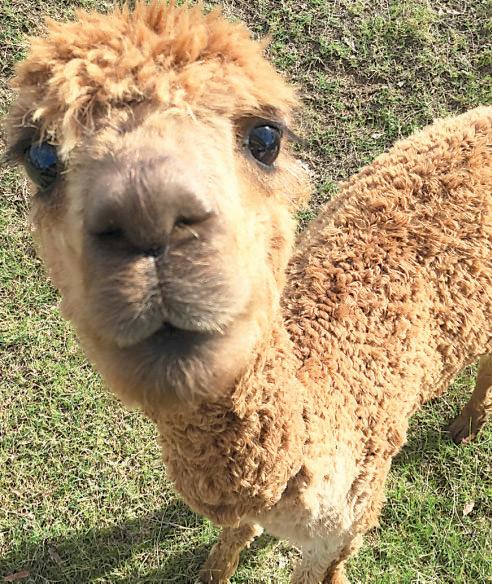































































Massey Ferguson, aworldwide brand of AGCO (NYSE:AGCO) is proud to announce the arrivalofthe MF1800 and MF2800 compact tractors for thefirst time in Australia andNew Zealand. These premiumworkhorsesbuildona reputation for nimble, versatile, andreliable performance.
“Introducingthe new MF1800 andMF2800 Eand MSeriesisour wayofbringing the DNA of over 175 years of farming experience andexpertise in making bigger tractorstothe compact range
Our commitment to reliability andversatility ensures customers in Australiaand New Zealand can enjoy thedependable performanceofthese powerfulmachines,” stated Haydn Reeves, Senior Manager of Marketing forMasseyFerguson in Australia, NewZealand, and Far East
“With the addition of thenew MF1800and MF2800 Eand MSeriestoour existing MFGC1700 andMF2600models, we now havea comprehensivecompact range, purpose-built forsmallerfarms,lifestyle blocks, or businesses suchashorticulture. We areproud to offer aproducttosuit all needs, andour dealers arethrilled,”says
Elliot Cook, ProductManagerfor Low Horsepower Tractors in ANZ.
“Both have theweight to put power to the ground andgiveexcellent stability and lifting performance.” Mr Cook continues.
The ESeries compact tractors range from 34.9 to 57.3 enginehorsepowerand feature dependableIseki® dieselengines, significant hydraulic capacity and the bold newstyling seen across the Massey Ferguson tractor line.

Designed forheavy-duty jobs and tough applications, the ESeriestractors are equipped with acast steelrear end and castfront axle,four-wheeldrive, and high-capacity hydraulics, providing the weight,muscle, and traction necessaryto handle demandingtasks.
Therange is suitable for propertyowners, livestock producers, landscapers, small farms, municipalities, andcommercial contractors,asthey canbeequipped witha broad range of implements and attachments,making them aversatileand economicalchoice.
“Notonly arethe ESeries tractorspowerful and user-friendly,but they also come at an accessiblepricepoint that is sure to
MF
appeal to customers looking forcosteffective solutions.” saysMrCook, Product Manager for LowHorsepower Tractorsin ANZ.
“Plus,these robust and dependable workhorses offer arange of capabilities that aretypically associated with larger horsepowerutility tractors, makingtheman excellent choicefor heavy-duty applications.”
The 1835Eand 1840E modelsfeature turbo charged 1.83-litre,3-cylinder engines that provide 34.5 and 39.4 engine horsepower, respectively

The larger-chassis2850E and 2860E modelsare each equipped witha brawny 2.43-litre turbo charged 4-cylinder engine, delivering48.8and 57.3 engine horsepower.
Liquid-cooled forincreased durability,the clean-burningIseki engines meet final Tier IV emissionsstandardsand can befound in specialised equipment used worldwide in abroad rangeofdemandingAg, turf, and commercial applications.
“The ESeriestractorsare designed to provide significant advantagesthanks to their rugged Iseki dieselengines. These enginesdeliver outstanding fuel efficiency,tremendouspower,and torque as well as reliability.Additionally,the ease of servicing andmaintaining thesetractors ensures thattheyremain efficient and dependable throughout their lifetime” Mr Cook notes.
The new ESeries compact tractors offers significant hydraulic capacity thanks to the dual-pump high-flowsystemthatprovides moreresponsive power at low engine speeds.
All ESeries models featureanopen station with awide, uncluttered platform,offering ample room andcomfortfor theoperator,
andall controlsare logically arranged and easy to understand.
The ESeriescompact tractorsfeaturea freshnew design, reflectingthe look of larger MasseyFerguson utilityand high horsepower tractors.
Operators can still countonthe solid metal hood and fenders, which arestronger and lesssusceptible to damage than plastic hoods found on othercompact tractors. TheESeriescompactscomewith 3-range hydrostatic transmission.

The1800E models offer aCategoryI rear 3-point hitch,while the2800Emodels areequippedwith aCat.I/II3-point hitch with up to 1100kg liftcapacity,providing compatibility with arange of implements, includingthe Massey Ferguson FL Series front loaders andCBbackhoes, depending on themodel.
Third-function loader controlenables the use of awidearray of frontattachments, such as a4-in-1 bucket.
A540-rpm rear PTO is standard.1800and 2800M SeriesFourmodels ranging from 35 to 60 engine horsepower

These new4-wheel-drivetractors buildon Massey Ferguson’sreputation for nimble, versatile, and reliable performance with new,advanced Iseki® engines, as wellas comfortand convenience enhancements.
The new 1800M and2800M Seriesare offered in both factory-installed caband open-stationROPS models.
The 1800 MSeriestractors feature 1.83-litre, 3-cylinder Iseki diesel engines and areavailable in two models with 36.2 or 39.4 enginehorsepower
The2800M Series offers two 2.43-litre, four-cylinder Iseki-powered models, from 48.8 to 60.3 engine horsepower
Theseengines areturbo charged for responsive power and liquid-cooled for
increased durability
Clean-burningIseki engines meetTierIV emissionsstandardsand can be found in specialised equipmentusedworldwide in abroad rangeofdemanding agriculture, turf andcommercialapplications.
The new MSeries compact tractors also benefitfroma freshdesign approach reflectingthe look of larger Massey Fergusonutility andhigh horsepower tractors.
Operators canstill countonthe solidmetal hood andfenders, whichare strongerand less susceptible to damage thanplastic hoods found on other compact tractors.
TheM Seriespremium compacts are standard-equipped with 3-range hydrostatic transmission.
Simple, intuitive,and easytooperate, it allows theoperator to reachthe speed needed forthe jobwithineachrange withoutshiftinggears
Dual foot-pedal controls make forquick andeasyforward/reversedirection changes
Cruise control allows operators to set and maintaintheir preferred workingor transportspeed.
The MSeries compact tractorsare availableinboth caband open-station configurations

Along withtilt-steering and aflat, unobstructed platform,the open-station ROPS modelsnow come with anew premium seat, providing greater supportand comfort, which operators appreciatewhen workinginrough conditions or over uneven terrain
Anew thumb-controlled throttle -also available on cab models -letsoperators quickly dial in the right enginerpm
The standard cabmodelsfeaturedual lockable,entry/exit doors, tilt steering and heating/air conditioning
TheNew Massey Ferguson 1800and 2800 Eand MSeries compact tractor models areavailable in Australia andNew Zealand from the 24th of April 2023.




APPLICATIOINS for the 2023 Victorian Landcaregrants and Victorian Junior Landcareand Biodiversity grants, funded by the Department of Energy, Environment and Climate Action, are now open.
Victorian Landcaregrants for volunteer groups: through the Victorian Landcare grants, environmental volunteer groupscan applyfor up to $20,000, for projects that protect or improve the natural environment, including native vegetation and wildlife, waterways and soils.
Grants of up to $500 arealso available to help with group and network administration and running costs. Applications can be made through your localCatchment Management Authority.
For moreinformation, visit the Victorian Landcaregrants page on the DEECA website. Applications close on May 16.
Victorian Junior Landcareand Biodiversity grants: the Victorian Junior Landcareand Biodiversity grants provide young Victorians withanopportunitytoparticipate in biodiversity-focused, hands-on projects and/or learning activities.
Victorian childcarecentres, kindergartens, primary and secondary schools, Scouts, Girl Guides and youth groups can apply for grants of up to $5,000.
For moreinformation and to apply, visit Junior Landcare. Applications close May 12.
STAR of the Southand KinawayChamber of Commerce have joined forces to connect Victorian Indigenous businesses to new opportunities in the growing offshorewind industry.
Kinaway is aregistered charity which aims to advanceVictorian Indigenous businesses with support, adviceand by creating opportunities.
Starofthe South is workingwith local suppliers to ensurethey are awareand ready for opportunities comingupon the project and across Victoria’s growing offshorewind industry.
Star of the South chief executive,Charles Rattray, said thereare exciting opportunities for Indigenous-owned businesses to get involved from the very beginningof this new industry.
“Local and Indigenous businesseswill play an importantrole in getting Victoria’s first offshorewind farms offthe ground,” he said.


“Working with Kinaway will help us find these businesses and promote them to our supply chain.”


Kinaway chief executive, Scott McCartney, said the organisation was excited to partner with the project and build opportunities for Victorian Indigenous businesses in the offshorewind sector
“Welook forwardtoseeing our Indigenous businesses participate in this project and beyond,” he said.
“This is just the beginning of what Ihope is along-lasting and valuablepartnership between Star of the South and Kinaway.”

Star of the South is takingpart in Kinaway events including Sistas in Business held recentlyinMelbourne, BlackCoffeeevents in Gippsland and the upcoming Deadly in Gippsland, AFirst Nations Business Expo

in Lakes Entrance on May 2-3.
The expo will showcase the expertise and talent of Indigenous businesses from the Gippsland region, and connect them to corporate partners, government, government agencies and business support services.
Mr Rattraysaidthe expo willbean opportunity for Indigenous businesses to connectdirectly with the project and learn moreabout the industry and opportunities.
“Offshorewind is on our doorstep and it’s important we’ve got localsonboard and ready to go,” he said.
“I encourage Indigenous businesses to come along and talkwith our teamat Deadly in Gippsland to learnmoreabout offshorewind and how to get involved.”
To find out moreabout the Deadly in
Gippsland,AFirst Nations Business Expo phone Deb O’Reilly on 0497 631 724.

Star of the South is Australia’s most advanced offshore wind project, proposed to be located offthe Wellington coast. Star of the South would help meet energy, emissions reduction, and economic goals by supplying secure, reliable and affordable power for up to 1.2 million homes.
The project is in the feasibility phase with environmental assessments currently underway to informproject planning and approvals.
If approved and proceeds to construction, works could start around the middle of thisdecade, withfirstpower aroundthe end of the decade.

RED meat and livestock producers have access to anew hub of grazingland management resources on the Meat & Livestock Australia (MLA) website.
The Grazing Land Management (GLM)hub has been launched and brings together arange of grazing land managementinformationand toolsinto aone-stop-shop.
MLA Program Manager,Adoption, Sally Leigo, said that the hub contained the tools,resources and trainingopportunities to help redmeat producers measureavailable pasture againstanimal demand, exploreimproved pasture options, or identify and manage weeds for grazing businesses across Australia.
“This new hub on the MLA website is a one stop shop for producers looking to learnhow to do afeed budget on their property, learnhow to manage weeds andweigh up options to improve pastureproduction. The GLM hub directs producers to availableonlinetools factsheets, events, training courses, and eLearning modules to enable practical decision making with the latest research recommendations,” Ms Leigo said.
“The hub provides arange of new informationongrazinglandmanagement fromwritten, to visual and in-person activities to ensureawide range of ways to learn, so thereis something

for everyone within this online package of resources.

“As well as online information and tools,the hub also helps producers understand how they can try out training and tryout the new practices at home through one of MLA’s longer-term programs with other producers.


“It puts producers in the driver’s seat to access the information they need, in the way they want to access it.”
Ms Leigosaid that autumn was a perfect time tofocus on grazing land management in both Northernand SouthernAustralia. For northern producers nearing the end of the wet season, it was agreat time to be getting outand preparing afeed budget for the comingdry season,and for southern producers to be preparing paddocksfor the winter and the subsequent summer
“Through the hub, producers can learn at their own pace, while also learning moreabout in-person events suchas MeatUp, BeefUpforums,GLM EDGE and BredWell FedWell workshops.
Producers can sign up to be amember or checktheir membership status at mla.com.au/membership



Access the hub mla.com.au/grazing
TWO senior academicsfromMonash Rural Health Churchillwererecently recognised withsenior fellowship of the Higher Education Academy (HEA).
AssociateProfessorMargaret Simmons and Dr Julie Willems bothachieved this internationally recognised qualification, recognising their innovativeapproaches to teaching and educational research supporting the next generation of rural health professionals.
ForAssociate Professor Simmons, working with supportive colleaguesand the local community werehighlights of her career showing what can be achieved educationally within arural environment.
“Rural educators can be at the forefront of innovative and cutting-edge learning experiences for students,” she said.
“I have not been fearful of trialling new approaches, particularly with the support of astrong professional and academic teaching and leadership team Ialso strongly resist the notion that ‘rural’ is somehow inferior,recognisingthat we have to continually work for parity and equity for ourrural patient and student cohorts.

Dr Julie Willems has pioneered cuttingedgeapproachestodistance learning, and been instrumental in the rapid pivot of training to online learning during the pandemic.
Through this approach, she has overcome many of the barriers faced in rural areas, and provided professional developmentto tertiary academics, secondary educators, nursesand supervisingdoctorsinvolved in teaching others.
“Personally, being awarded senior fellow of the HEA provides me recognition in the

broader global context -especially when Ihave worked mainly in support roles to professionally develop others,” she said. “Those contributions to the sector might not be easily recognised.”.
Dr Tammy Smith, Director of Education at Monash Rural Health, congratulated the pair on their HEA Fellowships.
“HEA Fellowship is asignificant achievement recognising many years of effort and commitmenttoteaching and learning at Monash and morebroadly,” Ms Smith said.
“Dr Willems and AssociateProfessor Simmons reflect the high calibreofacademics joining this well-regarded fellowship group.
“I’d like to congratulate them both once again on their achievement and on their wonderful contribution to education.”
In the future, Dr Willems and Associate ProfessorSimmons planto continue to mentor othersinteaching and learning, championing sustainability and supporting marginalised groups in the Gippsland region and beyond.
Liam DURKIN
WINNING aflag in regular time is so mainstream.
Glengarry Football-Netball Club gathered recently to commemorate 10 years since one of the most extraordinary events ever seen in local sport.
Actually, scratch that -sport in general.
The 2013 NorthGippsland FootballNetball League Grand Final is suretolive long in the memory of allwho werepresent that day.
On thatday at Traralgon Recreation Reserve -onSaturday, September 14, 2013 to be precise -the Magpies won their first premiership in 17 years, in the most truly astonishing of fashions.
Just four points separated Glengarry and Heyfield at three quarter time.
Nothing separated them at the end of regular time.
In adramatic finish, playedout in front of arecord crowd of 4400 people, the Magpies went on to win the premiership in extra time.
It remainsarguably the most unique and remarkable Grand Final victory in NGFNL history.
Thosewho werethere will surely never forget it.
Those who weren't surely wishtheywere.
For the enjoyment of both however (well, maybe except Heyfield supporters), this is the full story.
GLENGARRYhit alot of speed bumps on the way to 2013.
The Magpiesmade the Grand Final in 2011, and lost to Churchill by 17 points.
This came ayear after they bombed out in straight sets, losing the first semi final by 102 points to Rosedale.
Therewas another early finals exit in 2012,althoughthis time,itcame in the elimination final by just five points.
After going out in straight sets in 2010, losing the grand final in 2011, and losing a final by under akick in 2012, the Glengarry Magpiescould have been forgiven forthinking the Colliwobbles weren't just confined to the AFL team.
Josh King coached the team in 2010 and '11, beforehis successor,Ryan Potter stepped in.
Littlewas anyonetoknow the key role both men would end up playing in 2013.
The transitionwas ratherseamless, as Potter and King had played together in the SANFL for Woodville West Torrens.
Potter won aflag with the Eagles in 2006, beforecoming to Traralgon, and further onto Glengarry
"The whole reason Icameto Glenwas we played at Eagles together,Kingy and I always wanted to play together again, his hometown was Glen," Potter recalled.
Despite the recent shortcomings, Potter, who was best afield for the Magpies in the 2011 Grand Final loss,believed the side was on the right path.
"I always believed in my head we were building," he said.
"Welost in '11, '12 we could have gone further,welost to Cowwarr by five points in the elimination final, Ithink we werethe two teamshaving agood run that could have gone further.Cowwarr got within one point of making the prelim, if we beat them maybe we would have made the prelim.
"The next year Ithought it would be our year.Werecruited acouple, the start was terrible, but then once it clicked we just built on it and got that confidence."
THE start to 2013 was indeed terrible for Glengarry.
After the first six games, the Magpies had agrand total of one win to their name.

While asix-point loss to previous year preliminary finalistsSaleCityinthe opening round could have gone either way, there was no such narrativethe next week, as Glengarry was poleaxed by reigning premier Heyfield to the tune of 89 points.
The Magpieskicked justthree goalsin that encounter
Glengarry restored some lost pride witha gutsy 20-point win over Cowwarr,inwhat was an emotion-charged match following the death of club legend Colin May.
The effort to win thatmatchmay have drainedthe blackand whitearmy, as they lost their next three games to Traralgon Tyers United, Gormandale and Churchill.
After the losstoChurchill by 36 points in Round 6, the Magpies sat equal last on the ladder
Imagine the odds you would have got for aGlengarry flag at that stage.
With their season threatening to slip away, Potter got the Magpies together for achat.
"Therewas afew discussions.I sat the team down and asked them what we were doing well, what we could improve,"hesaid.
Despite what the ladder suggested, the Magpies realised they actually weren't that far off.
Three of their fivelosses had beenby undertwo goals, and they had restricted the opposition scoring to an average of three goals aquarter

The issue as far as Potter could see, was at the other end of the ground.
"Wekept teams low but we couldn't score," he said.
"I was worried but Josh King was out; Kingy is big for us, our key forward. When he came back he kicked 10 against Rosedale who weretop and we beat them.
"Wewerelucky also to have Nicho (Ben Nicholson) come back and Gussy(Mark Engley). Gussy's akey forward,hecame back and kicked six, seven and nine.
"Once theforwardlineclicked we were offand running."
WITH the band back together up forward, the Magpiesset aboutstabilisingtheir season.
Glengarrygot back to business,taking careofRosedale in Round 7, defeating the Blues 18.10 (118) to 10.11 (71).
The Magpies wereagain staunch in defence, only letting through five goals up until three quarter time.
King announced himself with 10 goals, and the following week against Woodside, he and Matt Royal kicked five each.
Royal kicked 21 goals for the season playing in avariety of positions, while Ross McDermott nailed 38,averagingexactly two goals agame.
Key forwardMark 'Guss' Engley slotted 54 and King 72, and from Round 7toRound 12, the Magpies did not drop agame.
From 1-5, the Magpies wereall of asudden 7-5, with awin over Heyfield among the lot.
Pottercould senseGlengarrywas well on their way.
"On-ball was good, backs weresolid, once we workedout that we could kick goals and Gussy cameback. Nicho (Ben Nicholson) was huge on the wing," he said.
"A few teams that beat us early, we got them back second timeand beatthem
pretty easy. Probably once we knocked off Rosedale and Heyfield,they were the top three, Ifelt we wereontrack."
THE Magpies won four of their last six to earnatop-threefinishwith an 11-7 record.
In what was an incredibly even NGFNL competition that year, teams two to five all ended on the same amount of points. Heyfield finished three games clear on top, while Cowwarr and Woodsidewerethe unlucky ones to miss out, despite winning 10 games each.
Churchill defeated the Kangaroos in the last round to qualify, and therewas no shortage of conspiracy theories regarding the means of such aresult.
Nevertheless, Glengarry had qualified for the double chance, and was arguably the in-formteam of the competition.
The Magpies had only lost two games between mid-May and early August, one of which was by apoint to Woodside in the penultimate round.
This may have servedasthe loss Glengarry needed,asthey then tuned up with a115point demolition of Boisdale-Briagolongthe week beforefinals.
The Magpies faced Traralgon Tyers United in the qualifying final -ateam they hadn't beaten all season.
But, with formontheir side, the Magpies dispatched the Bombers in abrutal exhibition, winning 11.24 (90) to 4.3 (27).
Glengarry then had Heyfield to deal with for aplace in the Grand Final.
With their confidence up, the Magpies got the job done 18.8 (116) to 15.8 (98).
Glengarry captain atthe time,Dean Brooks,believedthe confidenceinstilled in the group by Potter was akey factor
"Thebig thing was thebeliefinPottsy himself from all the boys," he said.
"He instilled so muchbelief in us that we could be good, we'd never felt anything like that, no one had ever played under a coach like Pottsy.
"Wehonestly felt like we could run through abrick wall any time we went out there."
Therewas just one morebrick wall to get through -the 2013 North Gippsland FNL Grand Final.
HAVING earnt the week off, Glengarry was afforded the luxury of getting afeel for the Grand Final surface.
The Magpies trained on Traralgon Recreation Reserve, beforefinding out they would again be opposed to Heyfield.
The Kangaroos had defeated Rosedale by 20 points, giving them achance of claiming back-to-back flags.
Brooks recalls ideal weather during Grand Final week, while Potter recalled running with atheme of 'everything matters'.
Acatch phrase for the Magpies was 'don't tell me, show me'.
Heading into the match, and up against aHeyfield line-up that boasted the likes of
former Hawthornplayer Adrian Cox, Potter said his side had no reason to fear "Wewereconfident," he said. "They might havefelt we had alucky semi but we wereconfident."
The Grand Final started with both sides enjoying periods of dominance.
Just three points separated the combatants at quarter time, as the Magpies and Kangaroos kicked four goals each.
Glengarry got on top in the second, adding five goals to one, to take acomfortable 23-point lead into the main break.
Heyfield however hit back, and made the most of their opportunities in the third.
The Magpies had the chance to further their lead early in the third, only for aset shot to register abehind.
From that miss, the Kangaroos went down the other end, which set offa succession of six unanswered goals.
In almost the blink of an eye, Heyfield had taken the lead, and wereahead by four points 11.8 (74) to 10.10 (70) at three quarter time.
The final termwas truly nerve-killing, although not for Potter,who struck avery calm figureamid the madness.
"I was never worried which was weird, just stick to structure," he recalls.
Seven goals werekicked, along with some handy points,and with no one really knowinghow longwas left, scores were deadlocked when the siren sounded to signal the end of regular time.
IN the moments immediately following players realising the match had ended in adraw, therewas aperiod ofconfusion from everyone involved, even the umpires. Such was the rarity, the rule book had to be dusted offtocheck to see just what the protocol was.

UnderNGFNL rules at the time, two 10-minute halveswithnotimeonwere to be played.
As Glengarry500-gamerTrevorMay remembers, therewas aperiodofmass confusion.
"Therewas abit of confusion with the rules at the time, extra time, five or 10 minutes beforeweknew what the go was," hesaid.
May added another storyline to the match, having told the group he was going to retire from senior football at the end of the season.
Due to idiosyncrasies associated with drawn finals, coachesweren'tallowed to address players out on the ground.
Fortunately forGlengarry, Potter,as a playing-coach was able to at least have some say.
Keepinghis sense of humour,Cox reportedly joked "see you next week".
"You couldn't speak to them, so lucky I was out there. Itold them 'we've got this, believe in yourself, you know what we do, practice this', but you couldn't bring them all in and huddle, we just had to go and set up," Potter said.
Understandably, with the madnessof
everything taken into account, extra time ended up being played with time on.
Glengarry got away to afast start in the first period of overtime, and fittingly, it was King who kicked the first goal.
He was to end up with seven in abest on ground display.
His seventhtook the leadto14 points, forcing some last ditch efforts from Heyfield, but the Magpies couldn't be denied,as they won their 11th, and surely greatest, premiership.
It was the Magpies' first flag since 1996.
May playedinthattriumph, as wellas 1994, but said 2013 held aspecial place in Glengarry FNC history.
"It's definitely one of the top ones," he said.
"Whetherit's aclub personor outside club person, the amount of people you see post-Grand Final, everyone's spoken about it for along time afterwards."
As for captain Brooks, feelings of being physically and mentally drainedwere soonforgottenwhen hewalkedontothe premiership dais.
"Unbelievable, afeeling you've never felt before. It was alittle bit of weight offthe shoulders, sitting next to my brother in the rooms purecontent," he said.
"The way we did it, the way the game played out,itwas taxing on everyone, because it was 10 minutes each side, so it was effectively an extra quarter,everyone was out on their feet, we wereall exhausted, but when the final siren went it was relief and shortly after,the excitement was just unbelievable."
Celebrations took place in and around Glengarry, with the congregation toasting success well into the next week.
For the record, the final scoreboardread Glengarry16.15 (111) to Heyfield 15 15 (105).
Best players for the premiers wereKing, Potter, Chris Panayiotou, DeanPearce, Luke Forbes (in just his seventh game for the year) and Ben Truin.
Truin remains the only survivor 10 years on
HOW the mighty have fallen.
What followed the euphoria surrounding Glengarry proved just how fragile football can be.
The Magpies' triumph became adistant memory less than 24 months later when they claimed the wooden spoon in 2015 -goingthrough the season without even winning game.
How much the premiership (and the events that led to it) took out of the Magpies might be summed up by this fact -Glengarry hasn'twon apremiershipsince 2013, or even played finals for that matter

The premiership defence ended with barely awhimper; the Magpies ran eighth in 2014 with a6-12 record.
While areservesflagcamein2017following an incredible four-week finals run (with May as captain), the Magpiesendured some tough years.
As is often the case when ateam reaches the top, personnel changes and players coming and going can mean it is difficult to back-up.
Potter,who coached for one moreseason beforemovingtoMornington, believed this is what happened to Glengarry.

"Wehad players go to Gippsland League, had acouple go interstate and then we had afew injuries, we lost all three ruckmen, we just seemed to be unlucky," he said.
"Maybe Ishould have pushed harder with morerecruits,but Ithought we werealright butwedid get alot of injuries, Ishould have maybe covered the players that did leave.
"Unfortunately Idid feel bad after Ileft, wedid have some struggle years. Robbie Cahillwho was the best and fairest and legendofthe club tookovercoaching, it was left in abit of ahardspot."
As for Brooks, who was 26 at the time and played all his football at the Magpies, admittedtofeeling as though therewas nothing moretoachieve.
"Once we won that flag, Ithought 'how can we get any better?'," he said.
Brooks continued to play on-and-offafter 2013, withstintsat MorwellEastand Traralgon and back to Glengarry.
Meanwhile,theirGrand Final opponents went down astruggling path of their own -albeit in entirely different circumstances Heyfield made the Grand Final again in 2014 -and losttheir onlygame for the season when it mattered most.
The Kangaroos werethereagain the next two years, only to fall short on both occasions, makingitfourconsecutive Grand Final defeats since lifting the cup in 2012.
The unfortunate run of outs led some to dub it 'The Birss Curse', in reference to Heyfield coach at the time, Damien Birss. (Who in fairness had coached the 2012 triumph).
Reflecting on 10 years sincethat momentous day, Potter said the memorieslived on vividly.
"Todo it from 1-5, everyone had written us off, needing to win in extra time was very unique, it was so special," he said.
"These (reunions) arewhat makes footy so special, you work so hard, you win the premiership, afew hours after that siren is the best, you hang out together,it's an amazing feeling, you can't explain it.
"Tohavethis 10-year reunion bringsit all back to celebrate how hardyou worked and how great the year was."








